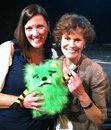Michelle Nelson-Schmidt's Blog, page 42
November 7, 2024
What if Psychics Can Communicate With Monsters
If psychics could communicate with monsters, you'd uncover fascinating insights into your fears and society's cultural narratives. Imagine understanding why these beings provoke such anxiety or curiosity. You'd explore how monsters reflect human behavior and ecological concerns. However, the limits of psychic abilities raise questions about the ethical implications of such interactions. While some might find comfort in these conversations, others may face psychological distress. Engaging with monsters might challenge societal views and reveal complexities behind their legends. Curious about how this could reshape your perspective on both monsters and psychic abilities? There's much more to reflect upon beyond this.
Key TakeawaysCommunication with monsters could uncover cultural narratives and societal fears, offering a deeper understanding of human behavior and anxieties.Insights gained from monster interactions might help alleviate public fears by exploring the reasons behind perceived aggression in these creatures.Bridging the gap between reality and myth through psychic communication could expand worldviews and validate shared experiences related to folklore.Ethical considerations are crucial, as exploiting vulnerable individuals seeking monster communication could lead to psychological distress rather than healing.Scientific skepticism surrounding psychic abilities emphasizes the need for empirical evidence and ethical standards in any purported interactions with monsters.The Nature of Monsters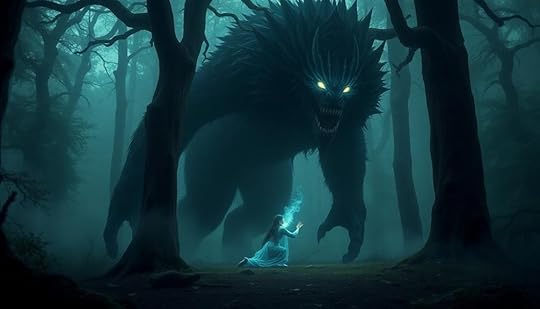
Throughout history, monsters have fascinated and terrified us, often representing our deepest fears and societal anxieties. These mythical creatures, from dragons in Western mythology to rakshasas in Hindu folklore, serve as embodiments of what we dread. Each culture weaves its own narratives, using monsters as cautionary tales to educate about the consequences of certain behaviors.
Think about how stories of the Loch Ness Monster or Bigfoot tap into both curiosity and fear, even though they lack empirical evidence.
In modern literature and media, you might notice a shift towards humanizing these creatures. Works like Mary Shelley's *Frankenstein* and contemporary vampire tales explore complexities, revealing that monsters often reflect deeper aspects of humanity. This humanizing approach challenges you to reconsider your views on monstrosity, blurring the lines between folklore and real-life behavior.
Moreover, the concept of "monstrous" behavior in sociology and psychology highlights how societal fears manifest in real human actions deemed evil or inhumane.
Ultimately, monsters reveal more about us than they do about themselves, holding a mirror to our fears and societal issues while prompting introspection.
Psychic Abilities and Their Limits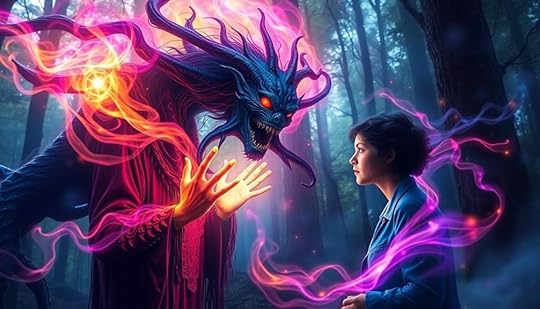
Monsters may captivate our imaginations, but when it comes to psychic abilities, the focus usually lies on interactions with spirits rather than mythical beings. While many claim to communicate with spirits or even the dead, the reality is that psychic abilities have their limits.
Most psychic mediums operate within a framework that doesn't extend to creatures of folklore.Techniques like cold reading can lead to vague interpretations, undermining the potential for precise communication.Historical context shows little documentation of methods for reaching out to monsters.Current scientific research hasn't substantiated claims regarding psychic abilities, especially regarding communication with the supernatural.Anecdotal evidence of encounters with monsters remains largely unverified, often lacking the scrutiny applied to established psychic practices.In essence, while the paranormal offers a tantalizing glimpse into the unknown, the domain of psychic abilities is primarily rooted in the afterlife, leaving little room for interactions with beings beyond traditional spiritual beliefs.
Potential Insights From Monster Communication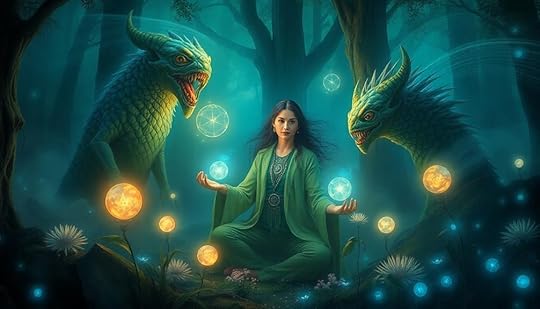
Exploring the potential for communication with monsters could reveal a wealth of insights about their behaviors and motivations. These insights might help you understand not just the monsters themselves but also the cultural narratives that shape our fears and challenges. Just like mediums who claim to connect with the dead, psychics might unravel the complex layers of monster lore, offering a glimpse into societal anxieties and values.
Here's a table that highlights the emotional connection we have with monsters and what insights could be gained:
Insight AreaExampleEmotional ImpactMonster BehaviorUnderstanding aggressionAlleviating fearCultural NarrativesMyths across civilizationsConnecting with heritageEcological ImpactsHabitat lossPromoting environmental awarenessPsychological InsightsCollective fearsValidating shared experiencesCommunication PotentialBridging reality and mythExpanding worldviewsCultural Perceptions of Monsters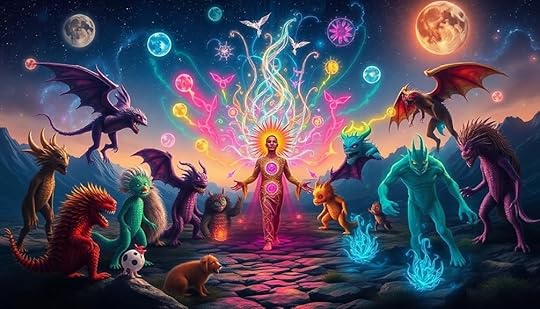
Society's perception of monsters shapes the way we interpret their existence and significance. These cultural perceptions vary widely, influencing how you view these creatures.
Monsters often serve as reflections of our deepest anxieties, reminding us of what we fear or misunderstand. In the domain of celebrity culture, characters like Frankenstein's monster can mirror the complexities faced by public figures, as seen in the allure of celebrity events that often blend the fantastical with reality.
Folklore depicts monsters like Bigfoot and the Loch Ness Monster, embodying the unknown. Literature and film present them as complex characters, such as Frankenstein's monster, evoking empathy.
Modern portrayals often highlight tragic backstories, challenging traditional notions of good and evil. Online communities spark discussions about the representation of monsters, fostering deeper engagement.
This evolving narrative prompts you to reconsider monsters not just as threats but as symbols of humanity.
Ethical Implications of Psychic Interactions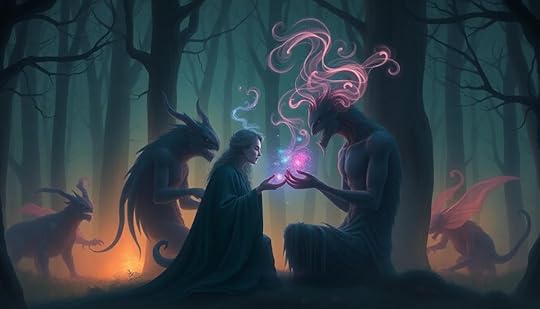
When you explore the ethical implications of psychic interactions with monsters, it's vital to recognize the potential for exploitation. Vulnerable people, driven by trauma or existential dread, may seek out a psychic medium claiming to contact the dead or communicate with monsters.
Unfortunately, this pursuit can often lead to psychological distress rather than healing. Instead of fostering emotional stability, these interactions may deepen fears, causing individuals to fixate on imagined dangers.
The lack of empirical evidence supporting psychic claims raises skepticism and underscores the need for ethical standards in this field. When psychics sensationalize their interactions for profit, they risk spreading false hope, manipulating clients, and potentially inciting public panic.
This exploitation can stigmatize those who genuinely believe in these entities and their potential threats. To protect individuals, it's imperative to establish clear boundaries and guidelines for psychic practices involving monster communication.
Practitioners must prioritize their clients' mental health, ensuring that they're not contributing to further distress. By addressing these ethical implications, you can help create a more responsible and compassionate approach to these sensitive interactions.
ConclusionIn a world where psychics can communicate with monsters, you might be surprised to learn that 60% of people believe in at least one type of monster, from Bigfoot to the Loch Ness Monster. This fascination opens doors to understanding not just the creatures themselves, but also our fears and cultural narratives surrounding them. By exploring these psychic connections, you could uncover profound insights into both the monsters and humanity's psyche, reshaping our relationship with the unknown.
What if Some Monsters Were Once Human Beings
What if some monsters were once human beings? You'd find that many iconic monsters stem from tragic pasts, transformed by choices and circumstances. Characters like Dracula and Medusa reveal how power and betrayal can twist identity. These stories often reflect deeper psychological struggles, showcasing the pain of rejection and loss of humanity. When you explore their transformations, you notice the moral lessons about actions leading to dire consequences. The blend of humanity and monstrosity creates powerful narratives that resonate with our fears and flaws. If you want to uncover more about these fascinating transformations, keep following the tale.
Key TakeawaysMany iconic monsters, like Dracula and Medusa, originated as humans, emphasizing the tragic consequences of their actions and choices.Transformations into monsters highlight psychological struggles, revealing deep emotional trauma and identity crises stemming from societal rejection and isolation.Curses and moral failings serve as cautionary tales, illustrating how personal choices can lead to monstrous identities and loss of humanity.Monsters often evoke empathy, reflecting shared human flaws and the internal battle between former selves and their newfound monstrous identities.Societal fears and cultural beliefs shape perceptions of monsters, revealing underlying moral dilemmas and the consequences of power and betrayal.Transformative Tropes in Literature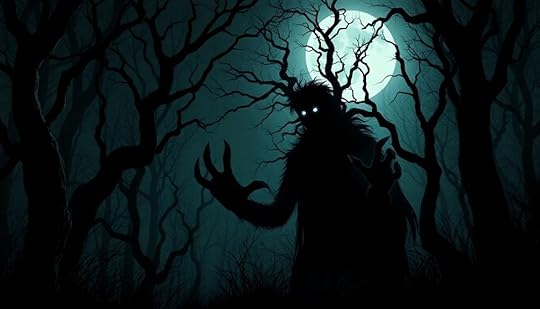
In the domain of literature, the "Was Once a Man" trope serves as a powerful vehicle for exploring the darker aspects of human nature. You'll find that characters who eventually transform into monsters often embody the consequences of their past actions or desires. This transformation highlights how moral failings can lead to a loss of identity, as seen in Mary Shelley's "Frankenstein." Here, the creature represents the rejected facets of humanity, prompting you to question what it means to be human.
Historical figures, like Vlad III, who became Dracula, illustrate how personal choices can morph individuals into embodiments of societal fears. Myths and legends also investigate this theme; Medusa's curse transforms her from a beautiful woman into a monstrous Gorgon, underscoring divine punishment. Such narratives make you feel morally compelled to reflect on the fragility of identity and the potential darkness within human beings.
The psychological impact of these transformations is profound. Characters grapple with their new identities while mourning the loss of their former selves, as seen in "Beauty and the Beast." This inner turmoil reveals the complexity of humanity, reminding you that we all harbor the potential for both light and darkness.
Iconic Monsters With Human Roots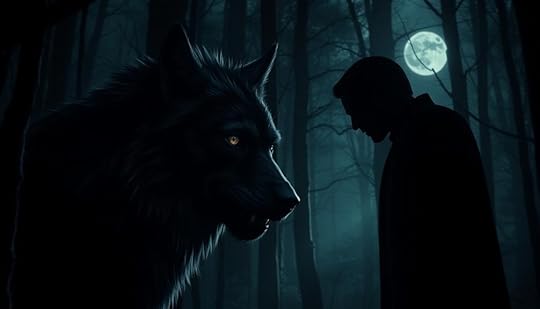
When you think about iconic monsters, many of them started as humans, forever changed by curses, tragedies, or psychological turmoil.
Characters like Dracula and Medusa show how power and divine punishment can twist a person's identity beyond recognition.
Exploring these transformations reveals the dark side of humanity and what it means to lose one's essence.
Transformation Through CursesThrough the ages, countless myths tell of humans transformed into monsters by curses, each narrative revealing deep-seated fears and moral lessons. This transformation revolves around the idea that becoming one with darkness often stems from human flaws or divine punishment.
As we reflect on these tales, we can also consider how our environments impact our lives, much like how home decor solutions can enhance our living spaces and moods. Here are three iconic examples:
Lycanthropy – The werewolf myth illustrates the struggle with loss of control, as a human transforms into a beast under the moonlight, highlighting the battle between humanity and primal instincts.Medusa – Once a beautiful woman, Medusa's curse by Athena serves as a cautionary tale about the consequences of betrayal and the harshness of divine retribution, turning her into a gorgon feared by all.The Beast – In "Beauty and the Beast," a prince's transformation into a monstrous form underscores themes of redemption, reminding us that true beauty lies within, often hidden beneath a cursed exterior.These stories resonate because they remind us that our actions can lead to dire consequences, and the monsters we fear may once have been, just like us.
Tragic Historical FiguresThe line between humanity and monstrosity often blurs in the stories of tragic historical figures, revealing how their actions can transform them into icons of fear. Take Vlad III, known as Dracula, whose brutal reign and bloodlust inspired the vampire myth. His cruelty illustrates how tyranny can warp a human soul. Similarly, Frankenstein's monster, created from human remains, embodies the consequences of scientific ambition and societal rejection due to his grotesque appearance.
The Wendigo from Algonquian folklore showcases a human's descent into cannibalism driven by desperation, symbolizing moral decay. Medusa, cursed by Athena, was once beautiful but became a feared gorgon, demonstrating how the actions of others can lead to monstrous transformations. Finally, the Beast from "Beauty and the Beast" serves as a reminder that arrogance can strip away one's humanity, though redemption remains possible.
Here's a summary of these iconic figures:
FigureTransformationSymbolismVlad III (Dracula)Tyranny to VampireBloodlust and fearFrankenstein's monsterHuman to MonsterAmbition and abandonmentWendigoHuman to CannibalDesperation and moral decayMedusaWoman to GorgonDivine punishmentPsychological Impacts of ChangeIconic monsters with human roots reveal deep psychological struggles that resonate with our own experiences of isolation and rejection. These characters often grapple with their identities, reflecting our fears and desires. Here are three key psychological impacts of their transformations:
Isolation and Rejection: Monsters like Dracula and Frankenstein's monster embody the pain of being shunned, highlighting our innate need for acceptance within society.Identity Crisis: Characters such as the Hulk showcase the turmoil of losing control, battling the fear that their monstrous forms will overshadow their humanity.Emotional Scars: Freddy Krueger's transformation into a vengeful entity stems from a tragic past, serving as a reminder of how societal neglect can distort one's psyche.These narratives act as metaphors for mental health struggles, illustrating the emotional toll of rejection and trauma.
The werewolf, for instance, symbolizes the conflict between human morality and primal instincts, a struggle familiar to many.
Mythological Origins of Monsters
From ancient tales to modern retellings, mythology often reveals a haunting truth: many monsters were once human beings, transformed by the whims of gods or the weight of their own actions.
Take Medusa, for example; cursed by Athena, her once-beautiful form became a fearsome visage, a stark reminder of divine punishment. Similarly, the Wendigo from Algonquian folklore emerges from human desperation, embodying the horrors of cannibalism and moral decay.
In Indonesian culture, the representation of creatures through intricate decor masks illustrates how art can encapsulate both beauty and horror, echoing the duality present in mythological transformations.
In Greek mythology, Scylla's transformation into a multi-headed monster illustrates how jealousy and betrayal can distort one's nature, leading to catastrophic consequences. The Berbalang of Philippine mythology, too, arises from a cursed existence, reinforcing the idea that our actions can have monstrous repercussions.
Then there are werewolves, cursed or afflicted humans who transform into wolves under the full moon, showcasing the thin line between humanity and monstrosity.
These myths serve as cautionary tales about the fragility of our human essence, reminding you of the potential darkness lurking within. Each story highlights a profound connection between human flaws and the terrifying transformations that follow, urging you to reflect on the nature of your own actions.
Psychological Impacts of Transformation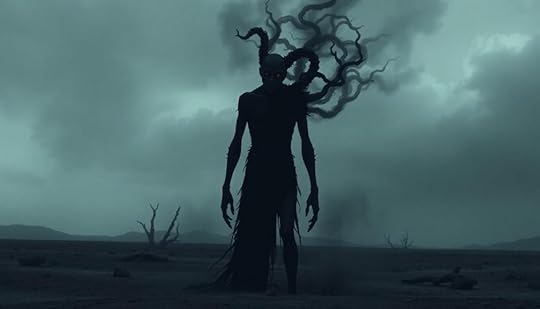
When you undergo a transformation into a monster, you might find yourself trapped in an identity crisis, struggling to reconcile who you were with who you've become.
The emotional trauma of this change can weigh heavily on your mind, leaving you feeling alienated and lost.
As you navigate these feelings, the clash between your past humanity and your new existence can lead to profound anxiety and despair.
Identity Crisis After TransformationThe transformation into a monster often triggers a profound identity crisis, leaving individuals grappling with conflicting senses of self. You might find yourself lost in a whirlwind of emotions, struggling to reconcile who you were with what you've become. The psychological impacts can be overwhelming, leading to confusion and a sense of loss about your true nature.
Consider these key factors affecting your identity crisis:
Disconnection from Humanity: You may feel a deep rift between your past and present, haunted by memories of your former self.Internal Conflict: The clash between your human ethics and newfound monstrous instincts creates a battleground within, forcing you to confront the moral implications of your actions.Isolation and Rejection: Society might reject you, leaving you feeling ostracized and alone, intensifying your struggle for acceptance.Navigating this complex landscape isn't easy. You wrestle with instincts that feel foreign while longing for the familiarity of your human experiences.
This struggle shapes your sense of identity, often leaving you questioning who you really are in this new, monstrous reality.
Emotional Trauma of ChangeTransforming into a monster brings with it profound emotional trauma that can deeply affect your mental well-being. You find yourself grappling with an identity crisis, struggling to connect your past human self with your new monstrous form. This clash often leads to overwhelming feelings of isolation and despair.
Memories of who you once were may haunt you, manifesting as PTSD-like symptoms that intrude upon your thoughts and daily life. As you navigate this change, an internal conflict arises between your primal instincts and the ethics you once held dear.
This moral struggle can cause significant distress, making it hard to accept the new you. The fear of rejection from society looms large, intensifying feelings of loneliness and alienation. In this emotional turmoil, you might seek coping mechanisms, whether through denial of your monstrous identity or an acceptance that feels foreign.
Ultimately, the transformation into a monster creates a vicious cycle of trauma, as you fight to reconcile who you were with who you've become. Understanding and addressing these psychological impacts is vital for your journey toward healing and self-acceptance.
Villains and Their Human Past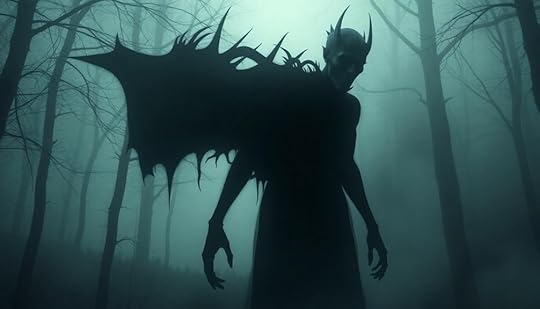
While many villains appear monstrous, their origins reveal a tragic humanity that often drives their actions. Understanding these backstories helps you see how they became the beings you fear.
Self-awareness, or the lack thereof, can play a significant role in their transformations, as many fail to recognize the consequences of their actions and choices, leading to their dark paths.
Here are three compelling examples:
Jason Voorhees: His transformation into an undead killer stems from the trauma of drowning as a child, illustrating how deep emotional scars can lead to monstrous outcomes.Kara of Rokyn: After exposure to alien waste, she becomes Parasite, showcasing how environmental factors can turn a once-normal person into a villain.Davy Jones: His monstrous form is the result of a life filled with choices that led to his cursed existence, reflecting the moral ambiguity that often accompanies villainy.These characters remind you that beneath their terrifying exteriors lies a history of pain and transformation.
Their journeys from human to monster emphasize that every villain carries the weight of their past, forcing you to confront the question: What choices lead to their dark paths?
Understanding their humanity can evoke empathy, challenging your perceptions of good and evil.
Cultural Interpretations of Monsters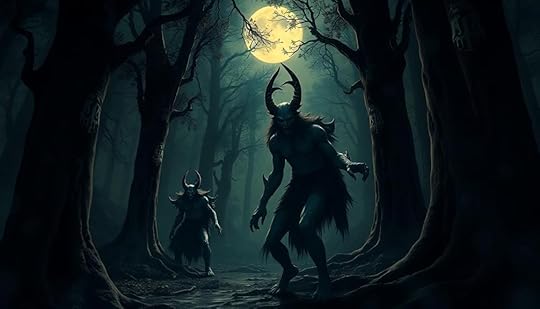
When you look at monsters across different cultures, you'll notice that their origins often stem from human experiences and societal fears.
These narratives reflect not just folklore but also the deeper symbolism behind transformation, revealing insights about morality and identity.
Historical Origins of MonstersThroughout history, monsters have often emerged from the depths of human fears and societal transgressions. These creatures not only evoke terror but also embody the moral dilemmas faced by humanity.
Consider how various historical monsters reflect these themes:
Vampires: Rooted in the legend of Dracula, based on the brutal Vlad III, these beings symbolize the darker side of power and human cruelty. This connection shows how iconic monsters in various cultures often share traits that reveal deeper societal fears.Werewolves: Linked to lycanthropy, the transformation into a wolf often mirrors social ostracism and mental illness, showcasing how society perceives and reacts to the 'other.'Cautionary Beings: Myths like the Wendigo and Medusa serve as stark reminders of the consequences of greed, betrayal, and divine punishment, warning against moral failure.These narratives highlight how real-life atrocities and societal fears shape monstrous identities, transforming humans into figures of horror.
By exploring these historical origins, you gain insight into the cultural interpretations of monsters, revealing that the line between humanity and monstrosity is often blurred by our own actions and choices.
In this way, monsters become reflections of our deepest fears and ethical dilemmas.
Folklore and Cultural BeliefsIn various cultures, folklore paints a vivid picture of monsters as embodiments of human fears and moral lessons.
Take the Wendigo, for instance, a figure from Native American mythology that symbolizes the transformation of a human into a cannibalistic spirit driven by greed or insatiable hunger. This tale warns against the dangers of excess and the loss of humanity.
Similarly, in Greek mythology, Medusa's story illustrates a beautiful woman cursed by the gods, showcasing the theme of transformation from human to monster as a form of punishment for her actions.
The Aswang in Filipino folklore represents societal fears surrounding betrayal, as it depicts a human who morphs into a creature, losing their humanity in the process.
Moreover, Skinwalkers in Native American beliefs demonstrate how cultural fears about the abuse of power manifest in the shape-shifting nature of these beings.
Finally, the Berbalang, another creature from Philippine lore, originates from a human transformed into a monster, emphasizing the consequences of wrongdoing and societal rejection.
Each story reflects deep cultural anxieties and the moral lessons societies wish to convey.
Symbolism in Monster NarrativesMonsters often serve as powerful symbols in narratives, reflecting the struggles and fears embedded within human nature. They embody our internal conflicts, highlighting the tension between our civilized selves and primal instincts. Here are three key themes found in monster narratives:
Loss of Identity: Creatures like vampires and werewolves symbolize the battle against losing control, illustrating our fears of succumbing to darker impulses.Consequences of Actions: Figures such as Medusa and the Wendigo serve as cautionary tales, reminding you that negative actions can lead to dire transformations.Rejection and Fear of the Unknown: The story of Frankenstein's monster emphasizes how societal rejection stems from fear of what's different, showing how hubris can alienate the very beings we create.In various cultures, monsters like the aswang in Filipino folklore reflect communal fears surrounding betrayal and loss.
Similarly, Japanese yōkai emerge from human emotions, showcasing how monsters can manifest our psychological states.
Power Dynamics and Moral Decay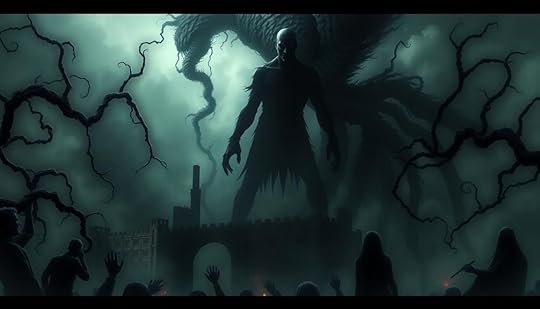
While power can inspire greatness, it often leads to moral decay for those who wield it. When you look at characters like Davy Jones from "Pirates of the Caribbean," you see how power can twist a once-noble captain into a monstrous figure, driven by corrupt dealings.
Plato warned us about this, showing that even just individuals can succumb to corruption when placed in authority.
The Cenobites from "Hellraiser" exemplify this change, as they once were human but became sadistic embodiments of moral decay. Their transformation highlights how the psychological effects of power can obliterate empathy, making it frighteningly easy to lose one's humanity.
Walter Pidgin in "The Thing" illustrates the ethical compromises made in the struggle for power and survival, demonstrating how the pursuit of authority can warp one's moral compass.
Similarly, Jason Voorhees, transformed into an undead killer after a traumatic death, embodies the correlation between revenge-driven power dynamics and moral decay.
In these narratives, you see the clear pattern: power, when intertwined with trauma and ambition, can lead to a profound loss of moral integrity, reshaping individuals into monsters.
Emotional Struggles During Transformation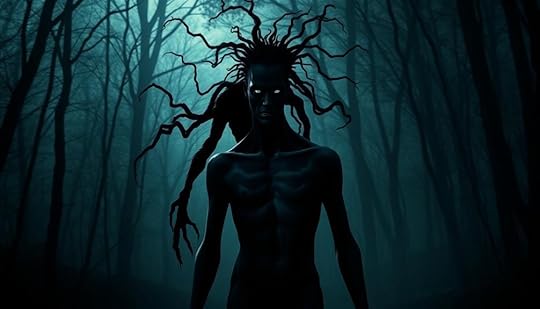
Power's corrupting influence often leaves a trail of emotional turmoil in its wake, particularly for those who transform into monsters. As you navigate this dark journey, you might find yourself grappling with intense emotional struggles:
Identity Crisis: You retain memories of your human self, yet the overwhelming instincts of your monstrous form clash violently with your past, creating a profound sense of loss.Isolation and Despair: The transformation often alienates you from loved ones, leaving you vulnerable to feelings of loneliness and the fear of being rejected by society.Psychological Trauma: As you confront this new reality, you may experience anxiety, depression, or anger, struggling to accept the monster you've become while yearning for the humanity you once had.These emotional conflicts can evoke guilt and shame, especially if your new identity leads to harmful actions.
You might find yourself seeking redemption, hoping to reclaim the person you used to be. This tumultuous inner battle showcases the profound psychological impact of transformation, revealing a haunting duality between your former self and the monster you now embody.
Societal Reactions to Monstrosity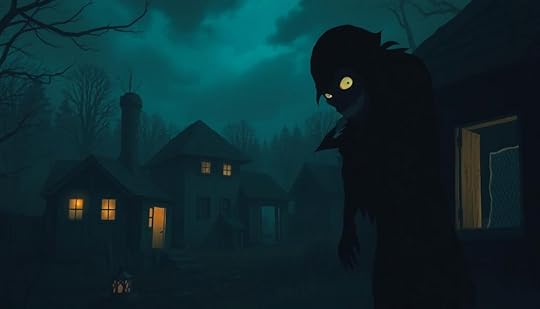
Throughout history, society has reacted to monstrosity with a mix of fear and misunderstanding. When individuals undergo transformations from human to monstrous forms, they're often ostracized or persecuted. You can see parallels in how people with disabilities have been treated; societal intolerance leads to viewing transformed beings as threats.
This fear can prompt a desire for extermination or exclusion, as society perceives these monsters as competition for resources. Acceptance becomes challenging, and conflicts arise between humans and those who were once human.
Curiously, monsters that display predictable behaviors might be seen as more trustworthy than humans, complicating the traditional good versus evil narrative. This complexity forces you to reconsider what monstrosity truly means and how society defines it.
Cultural folklore also plays a significant role in shaping societal reactions. It often serves to explain anxieties surrounding monstrosity, with rituals and festivals either celebrating or exorcising these figures.
This reflects their complex impact on cultural norms, revealing how deeply ingrained these reactions are in our collective consciousness. Understanding these dynamics can help you navigate the intricate landscape of how society perceives monstrosity.
Monsters as Reflections of Humanity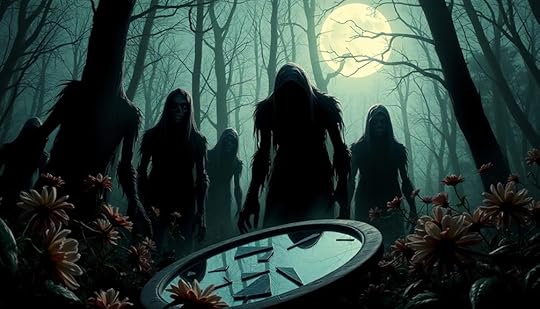
Monsters often serve as mirrors reflecting our own humanity, revealing the intricate layers of our emotions and moral dilemmas. They embody the struggles we face within ourselves and the consequences of our choices. Here are three ways monsters illustrate our human experience:
1. Cautionary Tales: Characters like Medusa and the Wendigo remind us that moral failings or divine punishment can strip away our humanity, urging us to contemplate the impact of our actions.
2. Embodiments of Struggle: Psychological narratives show how societal rejection can push individuals to embrace monstrous identities.
When you're faced with trauma or isolation, it's easy to see how one might turn to darkness as a coping mechanism.
3. Evolving Cultural Reflections: The portrayal of monsters changes with society's anxieties.
Today, many monsters evoke empathy, blurring the lines between good and evil and challenging your perceptions of morality.
ConclusionIn the tapestry of storytelling, monsters often weave threads of humanity into their fabric. By exploring their human origins, we uncover the fragile line between good and evil, revealing that beneath every monstrous facade lies a story of loss, pain, and transformation. As you confront these creatures, remember that they mirror our own struggles and fears, reminding us that within each heart beats the potential for both darkness and light. Embrace this duality, and you'll find beauty in the monstrous.
What if Monster Sightings Align With Ley Lines
If monster sightings align with ley lines, you're tapping into a fascinating intersection of geography and the unexplained. Ley lines are believed to be invisible energy pathways that ancient cultures recognized as spirit lines. Numerous reports suggest that cryptid encounters, like Bigfoot, frequently occur in these ley line-rich areas, indicating a potential connection. Similarly, UFO sightings often cluster along these energy routes. This correlation raises questions about whether ley lines influence the behavior or visibility of these phenomena. Curious about the implications of this connection? You'll find even more intriguing insights on the subject ahead.
Key TakeawaysLey lines are believed to serve as energy conduits, possibly influencing the behavior and visibility of cryptids in their vicinity.Historical accounts show a consistent pattern of monster sightings aligning with ley line intersections, suggesting a connection.Increased electromagnetic field (EMF) levels are often detected in areas where monster sightings occur along ley lines.Community reports and anecdotal evidence indicate heightened paranormal activity near ley lines, correlating with cryptid encounters.Mapping ley lines alongside monster sightings could provide valuable insights into the relationship between these phenomena.Understanding Ley Lines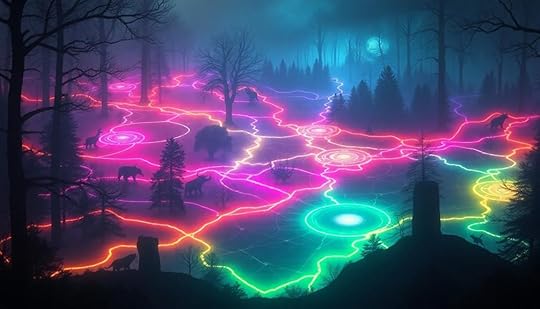
Many people have heard of ley lines, yet few truly understand their significance. Ley lines are thought to be invisible energy pathways that connect important geographical locations, often linked to ancient sites and rituals.
Cultures like the Druids and Native American Shamans recognized these lines as spirit lines or energy conduits, highlighting their deep-rooted presence in human history.
Modern interpretations suggest that ley lines might correlate with supernatural events, including UFO sightings and encounters with cryptids. You might find it fascinating that many historical sites were strategically built upon these lines, believed to enhance spiritual connections and ease local beliefs in the paranormal.
Even though scientific proof of ley lines remains elusive, their cultural impact continues to spark curiosity. People often report heightened psychic disturbances and hauntings in areas where ley lines intersect, suggesting a potential link between these energy pathways and unexplained phenomena.
As you explore deeper into the world of ley lines, you'll discover a rich tapestry of history, spirituality, and mystery that invites exploration.
The Connection to Cryptids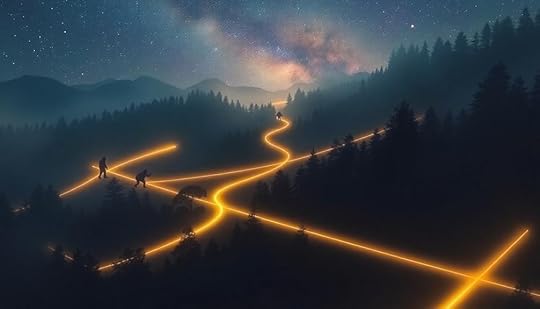
When you explore the connection between ley lines and cryptids, you'll find intriguing patterns in sightings along these energy paths.
Many reports, like those of Bigfoot in Massachusetts, suggest that these mystical alignments attract unknown creatures.
Historical accounts further reinforce this relationship, showing a consistent occurrence of cryptid encounters in ley line-rich areas.
Ley Lines and CryptidsHave you ever wondered why so many cryptid sightings align with ley lines? These mysterious energy pathways seem to influence not only the behavior but also the visibility of cryptids like Bigfoot.
Here are four reasons why ley lines might be essential in understanding these phenomena:
Geographic Concentration: Many sightings, especially in places like Massachusetts, occur in areas believed to lie along ley lines, such as Boulder Brook Reservation.Unusual Structures: Reports of teepee-like structures and consistent electromagnetic field (EMF) readings in these regions suggest a link between ley lines and cryptid activity.Historical Beliefs: Ley lines are often associated with sacred sites, hinting at a deeper, historical connection that may attract cryptids to these locations.Paranormal Energy: The theory that ley lines serve as conduits for paranormal energy could explain the concentration of sightings, drawing both enthusiasts and skeptics alike.These connections between ley lines and cryptids invite you to explore further.
As you investigate this intriguing world, consider how these energy pathways could shape the reality of the creatures we seek.
Sightings Along Energy PathsCryptid sightings often occur near ley lines, creating a fascinating intersection of folklore and unexplained phenomena. For instance, the Boulder Brook Reservation has documented signs of Sasquatch activity over 1.5 years, aligning with known ley lines that enhance the area's mystical reputation. Many communities actually believe ley lines influence the presence and behavior of cryptids, making these energy paths significant.
LocationCryptid SightingsLey Line ConnectionBoulder Brook ReservationSasquatchIntersects known ley linesAppalachian MountainsBigfootHigh concentration of ley linesPacific NorthwestChupacabraReports near ley linesGreat Lakes RegionWendigoHistorical ley line significanceReports along these energy paths reveal unusual structures resembling teepees and consistent EMF readings. Vocalizations similar to Bigfoot calls also surface in these areas, suggesting a correlation. The belief that ley lines amplify paranormal activity might explain why cryptid encounters cluster where these energy pathways exist.
Historical Anecdotes and PatternsThroughout history, numerous anecdotes illustrate the intriguing connection between ley lines and cryptid sightings. You might be surprised to discover that many legendary creatures seem to appear near these energetic pathways.
Consider these compelling points:
Bigfoot in Massachusetts: Reports of sightings often emerge from areas like Boulder Brook Reservation, which coincides with local ley lines.Historical Encounters: Accounts of the Flatwoods Monster and Hopkinsville Goblins frequently link to regions with ley line intersections.Eyewitness Testimonies: Many witnesses describe unusual occurrences near ley lines, suggesting these energies might attract cryptids.Spiritual Energy: Ley lines are viewed as conduits for spiritual energy, hinting that cryptids could be drawn to these special locations.Investigations into these patterns reinforce the idea that ley lines might play a role in the frequency of cryptid sightings.
It's as if these creatures are traversing through invisible highways of energy, heightening the mystery surrounding their existence. Understanding this connection could open up new avenues for exploration, revealing deeper secrets about the world of cryptids and the enigmatic nature of ley lines.
Alien Encounters and Theories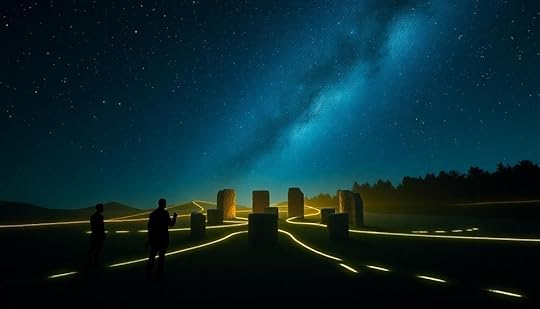
You might've noticed how reports of UFO sightings in Massachusetts often align with ley lines, sparking curiosity about their connection.
Some believe these energy pathways could attract extraterrestrial activity, making certain areas hotspots for encounters.
As you explore the theories surrounding these phenomena, consider how community experiences contribute to our understanding of the unknown.
Ley Lines and UFOsWhy do so many UFO sightings seem to cluster along ley lines? Many enthusiasts believe these mysterious energy pathways might be conduits for extraterrestrial activity.
Here are four reasons why ley lines could be significant in the domain of UFO encounters:
Increased Reports: Locations along ley lines often correlate with a spike in UFO sightings, particularly in areas like Massachusetts.Unusual Lights: Many reports of strange lights and aerial phenomena frequently align with ley line markers, suggesting a relationship between geography and alien encounters.Cryptid Connections: Some theories propose that ley lines may facilitate not only UFOs but also the appearance of cryptids like Bigfoot, creating a fascinating intersection of unexplained phenomena.Research Advocacy: Enthusiasts and researchers are calling for deeper exploration of ley lines to understand their potential role in the frequency and nature of these sightings.As you explore this intriguing topic, consider how ley lines may provide insights into why certain areas experience a higher incidence of UFO encounters.
The connection between ley lines and extraterrestrial activity remains an area ripe for exploration and discovery.
Alien Theories ExploredThe connection between ley lines and UFO sightings naturally leads to broader discussions about alien encounters and the theories surrounding them. Enthusiasts speculate that ley lines may not just be energy pathways but actual conduits for extraterrestrial beings. In Massachusetts, residents have noted a curious pattern: many UFO sightings coincide with these significant geographical features.
Here's a closer look at some of the alien theories explored:
TheoryDescriptionLey Lines as Energy PathwaysLey lines may attract or enhance supernatural events, including UFO sightings.Connection to CryptidsSightings of Bigfoot and other cryptids might link to alien phenomena through ley lines.Stan Gordon's Discussion GroupA group proposes ley lines contribute to both UFO and cryptid encounters.Hotspots for Paranormal ActivityResidents believe ley lines create hotspots for increased paranormal sightings.Interconnectedness of EventsTheories suggest alien encounters and ley lines are interconnected phenomena.These theories keep the conversation alive, igniting curiosity about what lies beyond our understanding of the universe and the role ley lines might play in these mysterious encounters.
Community Encounters DocumentedWhile exploring the intriguing domain of alien encounters, many residents in Massachusetts have documented their experiences, often linking them to local ley lines. This has sparked community discussions about the patterns of sightings and their potential ties to these mystical alignments.
Here are some notable observations:
Reports of UFO sightings frequently coincide with areas identified as ley line intersections.Discussion groups, like the one led by Stan Gordon, propose that Bigfoot sightings might also connect to UFO phenomena through these ley lines.The Flatwoods Monster Incident and the Hopkinsville Goblins Encounter exemplify how localized reports mirror the presence of ley lines nearby.Eyewitness accounts suggest a significant pattern, as many encounters happen in regions where ley lines converge.This ongoing interest in alien theories illustrates a broader fascination with how ley lines might influence not just extraterrestrial sightings but the very fabric of our reality.
As you investigate deeper into these community encounters, you may find that the links between ley lines and the unexplained are woven into the collective consciousness, inviting further exploration into the mysteries that surround us.
Monster Sightings in Wellesley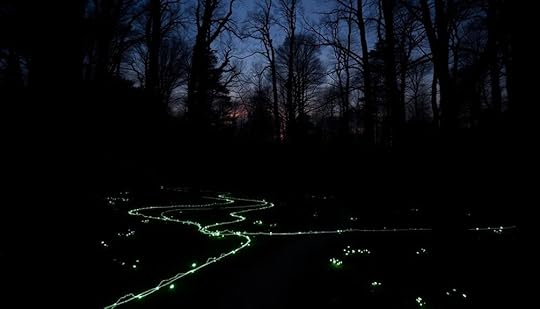
In Wellesley, reports of unusual structures resembling teepees and consistent EMF readings in Boulder Brook Reservation have sparked excitement among locals, hinting at the possibility of Bigfoot sightings. Over the last 1.5 years, residents have documented vocalizations similar to Bigfoot calls, contributing to a growing intrigue about cryptid activity in the area.
The intersection of ley lines in Wellesley may provide a fascinating backdrop for these phenomena, as local enthusiasts theorize a connection between these energy pathways and reported monster sightings. Community discussions have flourished, exploring whether these ley lines could influence the presence of cryptids like Bigfoot.
The merging of folklore with modern sightings illustrates Wellesley's cultural fascination with the unknown. As you investigate the historical ties to supernatural beliefs, you'll find that people are enthusiastic to explore the possible connections between these sightings and ley line locations.
The combination of documented experiences, unusual structures, and local lore keeps the conversation alive, inviting you to explore the mysteries lurking within Boulder Brook Reservation. Ultimately, Wellesley's cryptid sightings inspire curiosity and spark imaginations, encouraging deeper inquiries into the unknown.
Psychological Effects of Paranormal Activity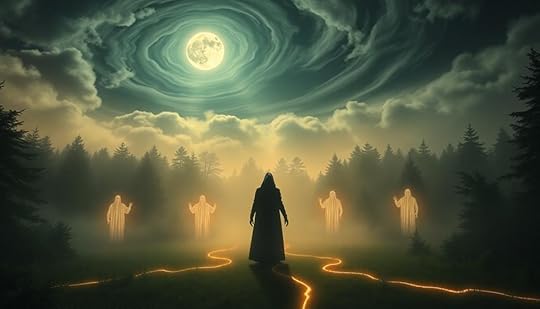
Encounters with cryptids can leave lasting psychological scars, often leading to feelings of paranoia or anxiety. If you've had such an experience, you might notice various psychological effects manifesting in your life, such as:
Heightened Anxiety: You may find yourself more anxious in familiar places, especially near reported ley lines.Obsession with Evidence: Your desire to prove the existence of the unexplained can become an all-consuming quest.Avoidance Behavior: You might steer clear of hiking or outdoor activities, fearing encounters or dangers related to paranormal phenomena.Need for Validation: Emotional responses to dismissive attitudes about your experience can make you crave validation from others.These psychological effects can transform your daily life, causing a ripple of changes in your behavior and mindset.
While your interest in cryptid research may deepen your understanding of nature, it could also perpetuate obsessive thoughts and fears that tether you to the unknown.
Embracing these feelings is essential, but it's vital to find a balance to avoid letting fear dictate your life choices.
Hiking Safety Along Ley Lines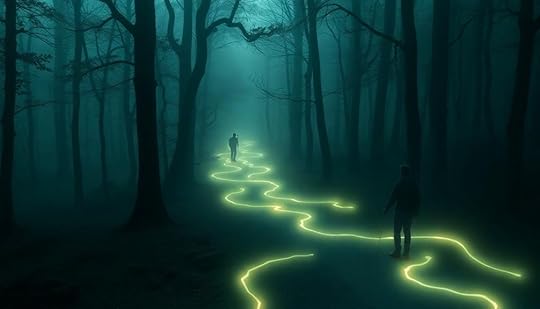
As you set out on a hike along ley lines, it's vital to stay mindful of your surroundings, particularly given the reports of unusual wildlife and cryptid sightings in these areas.
Ley lines often overlap with nature trails, creating an environment where the unexplained might manifest. While the allure of these mystical paths can be enticing, prioritizing hiking safety is essential.
Before you head out, make sure to inform someone about your hiking route and expected return time. Carry a reliable map and compass, as GPS devices might fail in remote areas.
Stay alert and trust your instincts; if something feels off, don't hesitate to turn back. Additionally, consider hiking with a partner, as there's safety in numbers.
Keep an eye out for any signs of unusual wildlife or disturbances, and always respect the natural environment.
Being aware of the potential for paranormal encounters can heighten your experience, but remember that your well-being should come first.
Embrace the intrigue of ley lines, but always approach your adventure with caution and respect for the unknown. Enjoy your hike, but keep your safety at the forefront.
Community Engagement and Folklore
Community involvement plays an essential role in shaping the folklore surrounding monster sightings and ley lines. In places like Wellesley, MA, local residents actively engage in discussions that enhance the legends of creatures like Bigfoot and other cryptids. This engagement not only preserves history but also fosters a deep connection to the mysterious.
Here are some key ways community engagement enriches folklore:
Ghost Tours: Residents participate in tours that highlight the area's paranormal history, often linked to ley lines.Storytelling Events: These gatherings allow people to share their encounters, validating personal experiences tied to ley line intersections.Documented Sightings: Reports from locations like Boulder Brook Reservation, featuring strange structures and sounds, spark intrigue about ley lines' influence on monster sightings.Local Theories: The community's fascination with ley lines has led to theories suggesting these energy pathways attract supernatural events.Together, these activities create a vibrant cultural narrative that intertwines folklore with contemporary exploration, inviting everyone to partake in the mysteries of ley lines and the legends they inspire.
Future Research and Exploration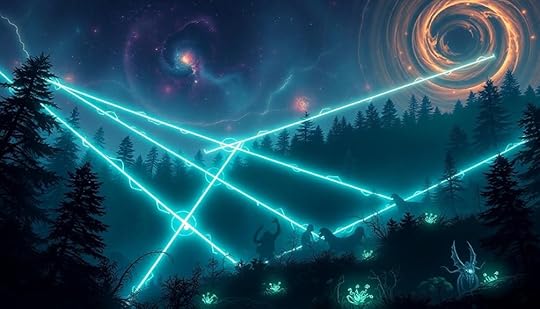
Mapping the intricate web of ley lines alongside known monster sighting locations could reveal fascinating insights into their connections. Future research can focus on identifying correlations between these sightings and energy pathways. By employing advanced technology like electromagnetic field (EMF) detectors, you can measure anomalies in areas where monster sightings have occurred along ley lines.
Collaborating with cryptozoologists and paranormal researchers will be essential for conducting thorough field studies. This interdisciplinary approach, including folklore studies, geology, and energy theory, may uncover deeper insights into the significance of ley lines in relation to cryptid behavior. Additionally, community engagement through citizen science initiatives can enhance data collection. Locals can report sightings and experiences, allowing for cross-referencing with ley line information.
Ley Line LocationMonster SightingsEMF AnomaliesLocation AYesHighLocation BNoLowLocation CYesMediumLocation DYesHighConclusionIn exploring the intriguing overlap between monster sightings and ley lines, you might find yourself captivated by the case of the Mokele-Mbembe in the Congo, where locals claim this dinosaur-like creature roams near ancient energy paths. Whether you believe in these phenomena or not, the connection fosters a rich tapestry of folklore and community engagement. As you hike along these mysterious lines, you might just encounter something extraordinary—or at least a good story to share!
What if Haunted Houses Serve as Portals for Monsters
If haunted houses serve as portals for monsters, you're stepping into a domain where the eerie and unsettling come to life. These portals might connect our world to others, letting shadowy figures and poltergeists cross over. You might feel their energy as they linger due to past traumas or unresolved emotions. These experiences evoke instinctive fear responses, but they can also lead to moments of exhilaration and community bonding. Imagining haunted houses as gateways not only heightens the thrill but also gives insight into our fears. Curious about how this phenomenon shapes our experiences? There's much more to explore.
Key TakeawaysHaunted houses may function as portals, allowing monsters and entities to cross into our dimension through energy imprints from past traumatic events.Reports of shadow people and poltergeist activity suggest these sites may attract malevolent entities seeking to interact with the living.Emotional turmoil from individuals nearby can amplify paranormal disturbances, potentially enabling the entrance of disruptive monsters.Anomalous phenomena like glowing orbs could indicate the presence of otherworldly creatures utilizing portals for dimensional travel.The interplay between emotional connections and hauntings may trap spirits and monsters, complicating their interactions with the living.The Concept of Portals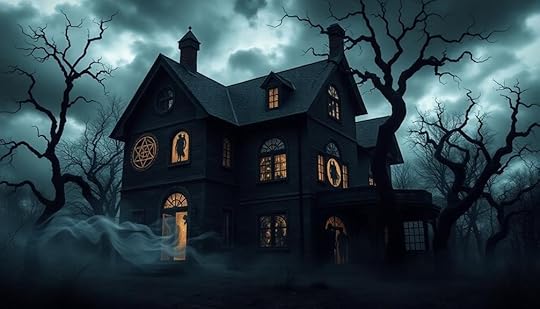
Portals are often imagined as mysterious doorways that connect our world to others, sparking curiosity and fear alike. When you think about haunted houses, it's easy to picture them as places where this phenomenon takes place. Many believe these eerie locations may house portals, allowing entities from different dimensions to cross over into our reality.
You might wonder what makes a site suspect for having a portal. Locations exhibiting anomalous activities, like glowing orbs of light or unexplained mists, often draw attention. Even without empirical evidence, the idea that these portals could facilitate interactions with otherworldly beings fuels the imagination.
Speculation suggests that portals don't just exist in sacred or traditionally significant areas. They could be lurking in unexpected places, waiting to reveal their secrets.
Anomalous phenomena associated with portals, such as strange shapes and odd creatures, hint at the diverse interactions that could occur.
Historical Perspectives on Hauntings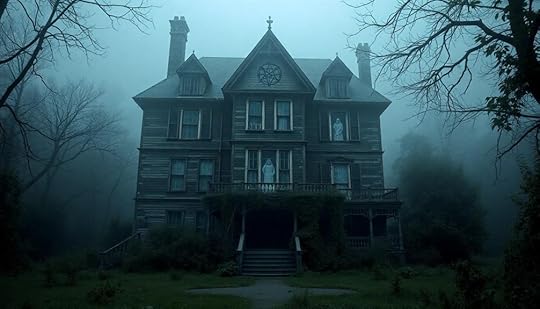
Exploring the historical perspectives on hauntings reveals how deeply intertwined these phenomena are with our past. Many haunted houses carry historical significance, often linked to tragic events like murders or accidents. This connection enhances their reputation as sites of paranormal activity.
Take the Winchester Mansion in California, for instance; it's associated with a curse and features a complex architectural design reflecting the owner's obsession with spirits.
Folklore and urban legends frequently use haunted houses as backdrops for ghost stories, illustrating societal fears and cultural fascinations with the supernatural. The architectural styles of these haunted sites, ranging from old European castles to Gothic mansions, contribute to their eerie atmosphere and historical context.
Parapsychology recognizes hauntings as manifestations of energy imprints left by significant historical events. You might encounter residual hauntings or even interactions with spirits as a result.
These perspectives invite you to reflect on how the ghosts of the past linger in our present and how these tales shape our understanding of haunted spaces. By investigating these historical elements, you can better appreciate the complex narratives that define haunted houses and their potential as portals to otherworldly domains.
Types of Monsters Associated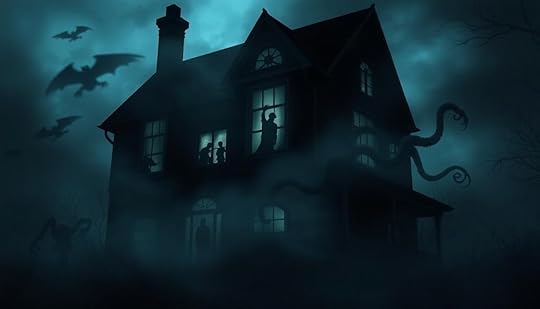
When you step into a haunted location, you might encounter Shadow People lurking in the corners, their presence sending chills down your spine.
You could also witness the chaotic antics of Poltergeists, whose disruptive energy often reflects the emotional turmoil of those nearby.
And let's not forget the terrifying characteristics of Demonic Entities, which can manifest through unsettling sounds and foul odors, leaving you questioning what truly resides in the shadows.
Shadow People EncountersMany people have reported chilling encounters with Shadow People, a category of eerie entities that often induce fear and unease. These shapeless dark masses usually appear in your peripheral vision, creating a sense of dread unlike traditional ghosts, which often possess human features.
One notable type is the Hat Man, a menacing figure dressed in a 1930s fedora. Witnesses frequently associate this entity with malevolent encounters, leaving them shaken.
Another unsettling variant is the Hooded Figure, which appears cloaked with no discernible facial features. The mere sight of these figures can heighten your anxiety.
You may also hear reports of shadow animals, like indistinct feline forms, alongside child-sized shadows that provoke a mix of fear and curiosity in those who spot them.
Encounters with Shadow People often involve erratic movements, described as gliding on invisible tracks or hopping, adding to their unsettling reputation.
You might find yourself questioning what lurks in the shadows, as these encounters often leave a lasting impression. The exploration of haunted houses can open the door to these mysterious figures, making it essential to approach with caution.
Poltergeist Activity DynamicsPoltergeist activity often manifests in startling ways, making it one of the most intriguing forms of paranormal phenomena. You might hear knocks and bangs, or even see objects moving seemingly on their own. This activity is often tied to emotional energy, especially from individuals—often teenage girls—who may be unconsciously channeling their feelings.
As you explore deeper into the phenomenon, you'll notice that manifestations can escalate dramatically. What starts as simple disturbances can evolve into furniture being hurled across rooms or even full apparitions appearing. This intensity often mirrors the emotional turmoil of the person involved, indicating that poltergeist activity can serve as a release for pent-up feelings.
Interestingly, some reports suggest that these disturbances may be linked to mischievous or even malevolent entities. These spirits might embody suppressed anger or unresolved issues, complicating the emotional landscape.
Additionally, certain locations or objects can act as conduits for this energy, intensifying the poltergeist's presence. Understanding these dynamics helps shed light on the types of monsters associated with poltergeist activity and the deep emotional undercurrents fueling such phenomena.
Demonic Entities CharacteristicsDemonic entities are some of the most formidable monsters associated with haunted houses, characterized by their malevolent intentions and distinct signs of activity.
Unlike human spirits that may linger due to unfinished business, demons are non-human spirits that exist independently and can possess individuals over time. This possession often leads to overwhelming dread, making encounters with these entities particularly terrifying.
You might notice common signs of demonic activity, such as foul odors, unsettling growls, and physical manifestations like scratching or pushing. These indicators set demons apart from typical ghostly apparitions, marking their presence with a palpable sense of fear.
Additionally, demonic entities can relocate after a religious provocation, complicating efforts to banish them from haunted locations.
Often tied to specific historical events or negative energy, these entities may find their way into haunted houses, acting as gateways for their dark influence.
The combination of their strong presence and the fear they instill makes dealing with demonic entities one of the most intimidating experiences in the domain of the paranormal.
Psychological Effects of Fear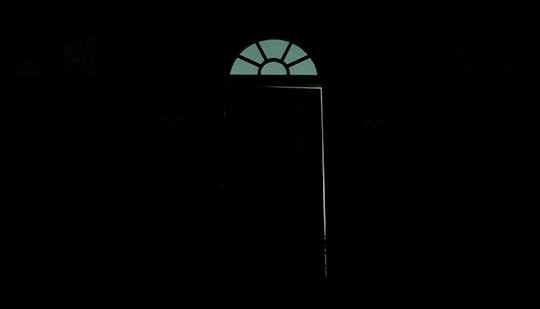
When you step into a haunted house, your body reacts instinctively, preparing you to confront fear.
This controlled exposure can help you develop coping mechanisms and build emotional resilience, making it easier to handle real-life stressors.
Plus, sharing these frightful moments with others can strengthen bonds and create a sense of community.
Fear and Coping MechanismsFear, often seen as a purely negative emotion, can actually serve as a powerful tool for personal growth and resilience. When you step into a haunted house, you engage with fear in a controlled environment, which helps you enhance your coping mechanisms. Instead of avoiding fear, you confront it, allowing you to manage real-life stressors and challenges more effectively.
In these spooky settings, you're not just facing ghosts; you're learning to navigate your emotional responses to perceived threats. This exposure can improve your emotional regulation skills, enabling you to process and reframe feelings of anxiety or panic.
As you scream and laugh with friends, the shared experience of fear fosters social bonding, creating a sense of community and collective resilience.
Moreover, the cathartic release that comes from confronting terrifying scenarios leads to an increased sense of accomplishment. You realize that overcoming fear, even in a haunted house, empowers you to tackle other fears in your life.
Ultimately, these experiences allow you to grow stronger, more resilient, and better equipped to handle the uncertainties life throws your way.
Emotional Resilience Through FearThrough the thrill of experiencing fear in controlled environments like haunted houses, you can greatly enhance your emotional resilience. When you confront your fears in a safe space, you develop coping mechanisms that prepare you for real-life stressors. Each scream and jump serves as a training ground for building confidence and adaptability, helping you face adversity with a stronger mindset.
Engaging with fear in these scenarios can considerably improve your emotional regulation skills, and the release of neurotransmitters like serotonin can further elevate your mood. You'll find that managing anxiety and stress becomes easier as you practice confronting fear head-on. Additionally, sharing these experiences with friends or fellow thrill-seekers fosters social bonding, creating a sense of community and support that's invaluable during tough times.
As you navigate through haunted attractions, you also experience a cathartic release of pent-up emotions. This release can lead to feelings of accomplishment, boosting your overall psychological well-being. It's not just a scare; it's a chance to grow stronger emotionally.
Cultural Significance of Haunted Houses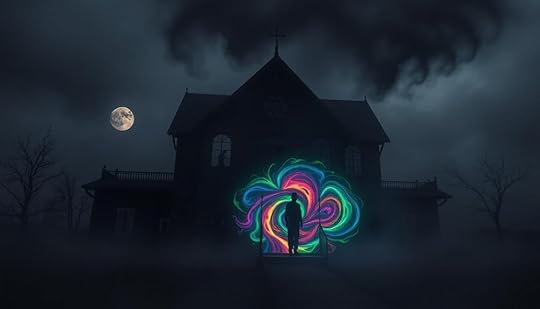
Haunted houses hold a unique place in our culture, embodying both our fascination with the supernatural and our collective anxieties about death and the unknown.
These eerie attractions serve as physical manifestations of cultural fears, allowing you to confront the things that frighten you most. During seasonal events like Halloween, they provide a thrilling form of entertainment and escapism, drawing you and countless others enthusiastic to face fears in a controlled environment.
Moreover, haunted houses greatly contribute to local economies through tourism. You might find yourself seeking out ghost tours or themed experiences, joining fellow thrill-seekers in exploring the chilling narratives behind these haunted spaces.
Cultural depictions of haunted houses in literature and film further reinforce their significance, transforming them into symbols of dread and curiosity. They invite you to explore the darker aspects of the human psyche, questioning what lies beyond the veil of life and death.
As you navigate these haunted spaces, remember that they're not just about fear; they're also a reflection of our shared human experience, connecting you to a rich tapestry of myths and stories that span generations.
Architectural Features of Haunted Spaces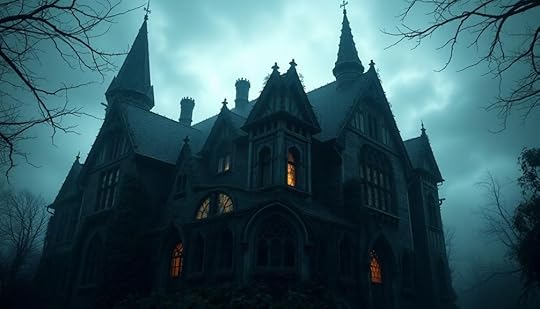
When you step inside a haunted house, the design elements immediately grab your attention, with dark, gothic styles and intricate details that set a chilling tone.
The creaking floorboards and narrow hallways create a sense of unease, making each movement feel like a whisper of fear.
Unusual features, like hidden passages or steep staircases, not only spark curiosity but also suggest the lurking presence of something otherworldly.
Design Elements Enhancing HauntingAs you step into a space designed to evoke fear, the architectural elements immediately draw you into an eerie narrative. Hidden rooms and labyrinthine designs create a sense of disorientation, making every corner feel fraught with peril.
You can't help but notice the dark, gothic styles that saturate the atmosphere, whispering tales of the past. Many haunted houses reflect early 20th-century or earlier architectural styles, enhancing their authenticity and your immersive experience. The use of natural materials, much like in Balinese design, can also contribute to a haunting ambiance, where wood and stone take on a sinister character in low light.
The incorporation of shadows plays a significant role in both haunted and serene spaces, evoking a sense of mystery and introspection similar to creating peaceful spaces.
Boarded-up doors and windows evoke a sense of abandonment and decay, heightening your curiosity about what secrets lie within. The sharp angles, deep shadows, and dim lighting play on your psychological fears, amplifying anticipation with each step you take.
Regional architectural influences shape the narratives woven into these haunted spaces. Each unique design echoes local folklore and cultural beliefs, making your visit not just a thrill but a connection to something deeper.
As you traverse through these carefully crafted spaces, you become part of a haunting story, surrounded by elements that enhance the fear and mystery, making every moment unforgettable.
Structural Features of FearOne of the most striking features of haunted spaces is their labyrinthine design, which often includes hidden rooms and twisting passageways that disorient you. As you navigate these eerie corridors, you can't shake the feeling that something—or someone—might be lurking just out of sight.
The architectural styles, like gothic mansions or old European castles, amplify this sensation with their dark aesthetics and historical significance, enhancing the overall fear experience.
You'll likely notice signs of physical deterioration, such as boarded-up doors and windows, which evoke a sense of abandonment. This decay heightens your anxiety, making you feel as if you've stumbled into a place long forgotten.
Large, shadowy structures and unsettling angles create an immediate sense of dread, making each step feel precarious.
Design elements like creaky floorboards and dim lighting engage your senses, keeping you on edge. Unexpected turns can lead to moments of panic, as you brace yourself for potential threats hidden within the haunted environment.
In these spaces, the very architecture serves as a catalyst for fear, turning an ordinary house into a chilling labyrinth that plays on your deepest anxieties.
Atmosphere Created by ArchitectureThe atmosphere of haunted spaces is intricately tied to their architectural features, which work in concert to amplify feelings of fear and unease. As you step inside, the dark, gothic styles envelop you, with elements like hidden rooms and labyrinthine designs lurking around every corner.
These structures often echo a bygone era, showcasing architectural styles from the early 20th century or earlier, whispering tales of tragic events that haunt their history. You can't help but notice the physical deterioration—boarded-up doors and windows add to the sense of abandonment, heightening the foreboding ambiance.
Architectural details like creaking floorboards and dim lighting engage your senses, making every step a thrilling yet disconcerting experience. Narrow hallways twist and turn, disorienting you and fostering feelings of vulnerability.
This carefully crafted design isn't just for show; it heightens the overall impact of the haunting narrative, drawing you deeper into the story. The combination of these elements creates an immersive atmosphere, allowing you to experience fear in a controlled yet exhilarating environment, where every shadow feels alive and waiting.
Paranormal Activity and Its Implications
While many people dismiss paranormal activity as mere superstition, a growing body of evidence suggests that locations believed to be portals may indeed host mysterious phenomena. You might encounter glowing orbs of light and reports of strange creatures, both indicative of entities traveling through these dimensions. These occurrences challenge your understanding of reality and highlight the potential existence of other domains.
Residual hauntings often play a role in portal activity. Traumatic events can leave energy imprints, contributing to disturbances you might experience at these sites.
You may also notice shadow people, whose shapeless forms and association with dread hint at interactions with other dimensions. Reports of unexplained mists and odd sounds frequently surface near suspected portals, further indicating potential dimensional interactions.
The presence of portals in haunted houses mightn't just bring residual hauntings; they could also encourage intelligent hauntings. Spirits may retain awareness and communicate with you, often connected to unresolved emotional ties.
This interaction blurs the line between the living and the dead, making you reconsider the implications of paranormal activity and its possible ties to the unseen world that surrounds us.
Safety Measures in Haunted Attractions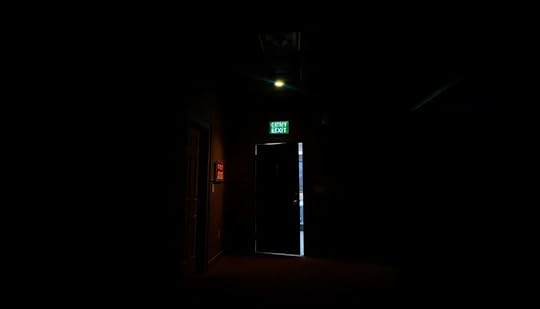
Haunted attractions often prioritize safety to guarantee a thrilling yet secure experience for visitors. These venues implement clear safety protocols, including visible emergency exit signage, ensuring you can find your way out if needed.
Staff members are trained to recognize signs of distress in guests, especially those with anxiety disorders, allowing them to intervene and provide support when necessary.
You'll also find options to opt-out or take breaks during the attraction, which helps you manage your fear levels effectively. This consideration makes sure that everyone can enjoy the experience at their own pace.
Accessibility measures are essential, too, accommodating individuals with mobility challenges, so everyone can safely partake in the fun.
Before opening, operators conduct thorough risk assessments to identify potential hazards and implement the appropriate safety measures. This proactive approach helps create an environment where you can immerse yourself in the thrills without unnecessary worries.
By prioritizing these safety measures, haunted attractions aim to keep the excitement alive while ensuring that your experience is both enjoyable and secure.
Emotional Connections to the Supernatural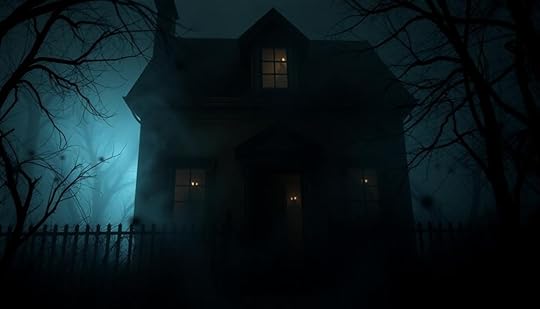
Exploring the depths of emotional connections reveals how our ties to loved ones can shape haunting experiences. When you think about a location that feels haunted, consider the emotional history tied to it. Spirits often linger where they feel a strong bond, drawing them to places connected to their loved ones or unresolved injustices. These emotional ties can attract entities, making certain sites feel particularly charged.
If someone experienced injustice in life, that emotional weight might create a haunting that reflects their fears and unaddressed traumas. You might sense the lingering fear of judgment when encountering such spaces, bringing an unsettling energy to the air.
Additionally, the residual emotions associated with traumatic events often hang around, affecting not just the haunting but also your feelings as you navigate the site. Awareness of these past events can shape your interactions with the supernatural, guiding you toward understanding rather than fear.
Furthermore, the emotional distress of living relatives can entrap spirits, preventing them from moving on. This complex relationship between the living and the dead emphasizes how deeply intertwined our feelings are with the supernatural, making each encounter uniquely personal.
Experiences From Haunted House Visits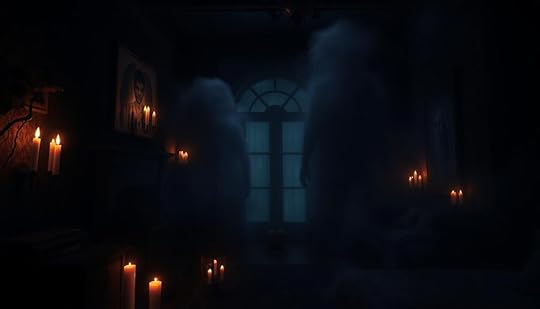
Visiting haunted houses can ignite a whirlwind of emotions, transforming fear into exhilaration. You step inside, and the atmosphere envelops you. The sounds of creaking doors, distant screams, and unsettling whispers amplify your senses, making every shadow feel alive. These sensory experiences simulate real-life threats, triggering primal emotional responses that mirror genuine danger.
As you navigate the eerie corridors, you might feel your heart race, but there's also a strange sense of catharsis. Many participants report that after facing these fear-inducing environments, they feel a surge of resilience and accomplishment. It's a safe space to confront your fears, allowing you to explore the depths of your emotions without real-world consequences.
Moreover, haunted houses encourage social bonding. Sharing these intense experiences with friends or family often leads to communal feelings of relief and triumph once you emerge unscathed. This sense of camaraderie can deepen your connections.
ConclusionHaunted houses might just be playful attractions, but they also tap into our deepest fears and fascinations. You might argue they're merely entertainment, yet they invite us to confront the unknown and explore our own emotions. By engaging with these eerie experiences, you connect with age-old stories and the human condition. Whether they're real portals or not, haunted houses challenge us to face what lurks in the shadows, reminding us that fear can lead to understanding and connection.
What if Monsters Draw Power From Paranormal Energy
If monsters draw power from paranormal energy, they tap into the very essence of fear and emotion that lingers in haunted places. This energy manifests as spectral vibrations, often heightened in areas with traumatic histories. When you feel intense fear or anxiety, it creates an energy field that monsters thrive on. They can absorb this emotional residue, amplifying their strength and presence. Elevated electromagnetic fields around water sources often signal their activity, revealing their connections to the paranormal dimension. You're just scratching the surface of how these relationships unfold, and there's much more to uncover in this eerie phenomenon.
Key TakeawaysMonsters utilize various sources of paranormal energy, often linked to societal fears and emotional turmoil, enhancing their power and presence.Elevated electromagnetic fields (EMF) signal increased paranormal activity, providing monsters with rich energy sources to draw strength from.Emotional energy, especially from traumatic events, serves as a potent fuel for monsters, amplifying their manifestations and interactions with humans.Fear acts as a powerful energy source, transforming emotional distress into resonance that attracts and empowers supernatural entities.Locations with unresolved emotional imprints often become hotspots for monster activity, as they harness the residual energy from past traumas.Understanding Paranormal Energy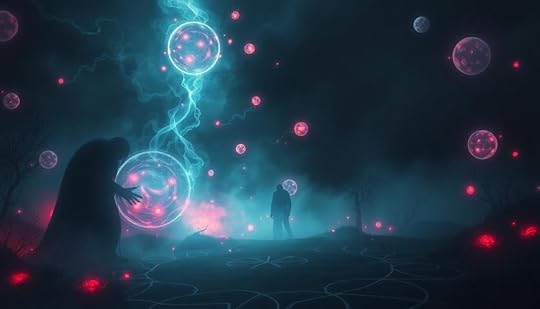
Understanding paranormal energy requires delving into its unique characteristics and influences on various entities, especially monsters. This spectral energy, often perceived as tinted vapor in a range of colors, serves as an essential power source.
You'll notice that ghosts and spirits, composed entirely of this spectral energy, can be absorbed by injured spirits, demonstrating a flow of energy that empowers these beings.
The compatibility of these energy colors is significant; it affects how entities heal and access power. Monsters may draw strength from specific spectral energy sources, relying on the right color to enhance their abilities or sustain their existence.
Moreover, higher concentrations of electromagnetic fields (EMF) often signal paranormal activity, hinting at rich energy sources that monsters might exploit for their own purposes.
By understanding these dynamics, you can appreciate how paranormal energy not only defines the existence of ghosts and spirits but also serves as a lifeline for monstrous entities.
As you explore this fascinating domain, consider how the manipulation of spectral energy can influence the balance of power among these entities, revealing a complex web of interactions in the paranormal world.
The Nature of Monsters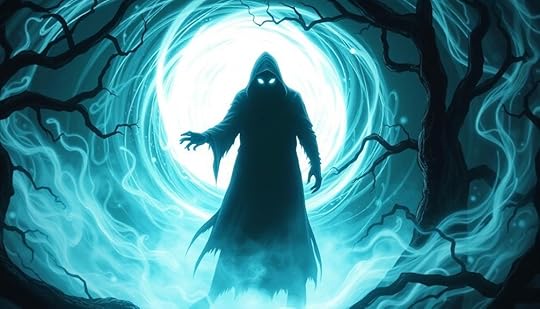
Monsters often draw their strength from various sources of paranormal energy, reflecting our deepest fears and societal concerns.
You might notice that encounters with these creatures frequently happen during spikes in electromagnetic fields, hinting at their connection to the supernatural.
Understanding how monsters manifest through these energy sources can reveal a lot about their nature and the impact they've on us.
Monsters and Energy SourcesThroughout history, tales of creatures lurking in the shadows reveal a fascinating connection between these beings and the mysterious forces of paranormal energy. Monsters, whether they be demons or spectral beings, may draw power from this energy, which exists beyond our physical domain.
This spectral energy can be manipulated by various entities, creating a dynamic relationship between monsters and the energies they harness. You might find it intriguing that the color spectrum of spectral energy plays an essential role in determining the type and strength of energy accessible to monsters. Unique hues are often linked to specific supernatural origins, indicating that not all monsters draw from the same sources.
Additionally, some paranormal entities, believed to be extraterrestrial beings without mortal forms, likely rely on ambient paranormal energy for their very existence.
Research shows that higher electromagnetic field (EMF) concentrations in certain areas can create environments rich in paranormal activity, making it easier for monsters to tap into surrounding spectral phenomena.
This interplay between spirits and ghosts, along with the spectral energy they produce, highlights the complex and often unseen connections that fuel the power of these enigmatic beings.
Manifestations of Paranormal PowerWhen you explore the nature of monsters, it becomes clear that their manifestations are deeply intertwined with paranormal energy. These creatures often draw strength from the electromagnetic fields (EMF) generated by paranormal activity, particularly in locations associated with ghosts. The emotional energy left behind in haunted places serves as a potent source, allowing monsters to harness this spiritual energy and enhance their own power.
The table below illustrates the connection between types of monsters and their specific energy sources:
Monster TypeSource of EnergyAssociated Paranormal ActivityGhost-FeedingEmotional distressHigh in haunted locationsDimension-HoppingPortals between dimensionsOften near EMF spikesSpirit-LinkedResidual spiritual energyManifestations of ghostsReports of monsters frequently align with elevated EMF readings, suggesting that their appearances are influenced by the presence of paranormal energy. As you dive deeper into this phenomenon, you'll find that understanding the manifestations of these monsters involves recognizing the complex relationships they have with ghosts and the spiritual energy of their surroundings.
Sources of Spiritual Power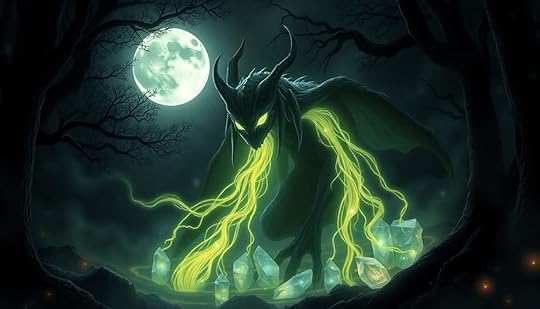
Spiritual power flows from a variety of sources, each contributing uniquely to the sphere of the paranormal. One of the most notable is spectral energy, which manifests as tinted vapor in different colors. This energy is manipulated by beings known as spectrals, and compatibility with these colors is essential for effective healing and power access. Not all colors occur naturally, so understanding this spectrum is vital.
Water stands out as a significant conduit for spiritual energy. Large bodies of water not only facilitate ghost manifestations but also influence humidity levels, which can affect paranormal activity.
You'll find that the presence of ions in saltwater enhances spiritual energy transmission, making these areas hotspots for spiritual encounters. Additionally, scientific studies show that higher electromagnetic field (EMF) concentrations near water bodies correlate with increased paranormal events.
Ultimately, spirits often draw from environmental sources, including these electromagnetic fields and natural elements, to manifest or communicate. Recognizing these sources helps you understand the connection between nature and the spiritual sphere, revealing how deeply intertwined they truly are in the world of ghosts and paranormal phenomena.
Manifestation and Interaction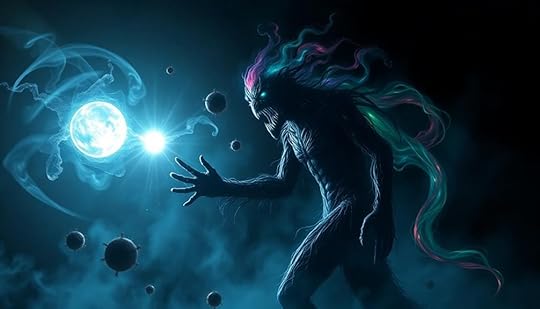
Monsters tap into paranormal energy in ways that can be both fascinating and terrifying. They often manifest in locations rich with emotional turmoil, where traumatic events have occurred. Just like ghosts are made from the emotional energy tied to these experiences, monsters thrive on the chaos that lingers.
You might notice their presence in areas with heightened electromagnetic fields (EMF), as scientific studies link increased EMF concentrations to supernatural encounters.
Water serves as a powerful medium for spiritual energy, allowing monsters to draw strength from large bodies like lakes or rivers. These environments enhance their manifestations, making them more pronounced and tangible.
Additionally, phenomena like poltergeist activity suggest that unresolved emotional issues can empower these creatures, resulting in stronger interactions with the living.
Some theories indicate that certain locations serve as portals, enabling monsters to traverse dimensions and access energy from the spiritual domain. This connection facilitates their interactions with our world, allowing them to draw upon the paranormal energy around us.
In these ways, the manifestations and interactions of monsters remind us that there's much more to reality than meets the eye.
The Role of Fear and Emotion
Fear acts as a potent energy source, fueling the presence of monsters and paranormal entities.
When you experience intense emotions, especially linked to trauma, you might unknowingly create an environment that attracts these forces.
Understanding this connection can shed light on how your emotional state influences the dynamics of the supernatural around you.
Fear as Energy SourceHarnessing fear as an emotional energy source reveals intriguing connections between our psychological experiences and the paranormal. When you feel fear, it isn't just a fleeting emotion; it transforms into a powerful energy that can resonate with both spirits and supernatural entities. This energy can amplify paranormal activity, leaving behind residual imprints that might attract malevolent beings.
In relationships, for instance, unresolved fears can complicate emotional connections, leading to cycles of distress and attraction to turbulent situations, similar to how lingering feelings can complicate moving on.
Consider these aspects of fear as an energy source:
Adrenaline Surge: The rush of adrenaline you experience can create an energy field, making you more susceptible to paranormal influences.Residual Energy: Intense emotional experiences, particularly fear, can leave lasting energy imprints in specific locations, inviting spirits to linger.Poltergeist Activity: Emotional turmoil, especially in adolescents, can manifest physically, suggesting fear can trigger supernatural disturbances.Cultural Influence: Many stories depict monsters thriving on fear, reinforcing the notion that your emotional state serves as an energy source for these entities.Emotional Resonance and MonstersEmotional energy pulses through us, creating a powerful connection to the supernatural, especially when fear takes center stage. When you experience fear, your emotional resonance heightens, making you more susceptible to paranormal encounters with monsters. These creatures thrive on the distress you feel, drawing strength from your intense emotional reactions.
Think back to those moments of sheer terror; your heightened state of fear could inadvertently attract a monster, amplifying its presence in your existence. This connection isn't just personal; collective fear can also enhance the potency of monsters. In haunted locations, the shared anxiety of a group can lead to pronounced phenomena, as emotional energy swirls around, feeding supernatural entities.
Consider the phenomenon of poltergeist activity, often centered around individuals, particularly adolescents. They may unknowingly channel emotional energy, drawing in and empowering these entities.
As you navigate your emotions, remember that fear isn't just a reaction; it's a potential conduit for monsters, allowing them to invade your reality. Embrace this understanding, and you'll realize how closely intertwined your emotions are with the supernatural dimension.
Trauma-Induced Power DynamicsIntense experiences often create a unique energy that monsters can tap into, especially when trauma is involved. This trauma-induced energy resonates with fear and emotional distress, allowing paranormal entities to thrive in areas marked by sorrow and violence. When you encounter a ghost or a shadowy figure, know that it might be feeding off your emotional state.
Consider the dynamics at play:
Emotional Residue: Locations associated with trauma hold energy imprints, drawing in monsters seeking to amplify their power.Poltergeist Activity: The turmoil from living individuals can inadvertently empower manifestations, resulting in chaotic paranormal events.Fear as Fuel: Shadow people often evoke dread, suggesting their power is directly linked to the fear they instill in you.Collective Trauma: Places marked by violent histories often exhibit increased paranormal activity, indicating a rich source of trauma-induced energy.This connection between your emotions and the presence of monsters highlights a chilling dynamic. As you navigate these haunted spaces, be aware of how your feelings can influence the very entities that lurk in the shadows.
Implications for Human Experience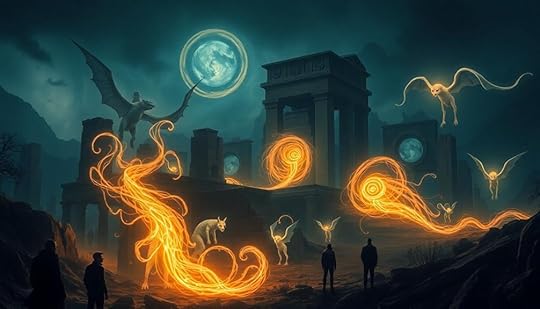
Monsters' presence in our world can profoundly shape human experiences, often tapping into the emotional energy we unwittingly emit during moments of fear or trauma. This connection between our emotions and paranormal activity can enhance feelings of dread, anxiety, or curiosity, effectively turning our own feelings against us.
Here's a breakdown of how these interactions can manifest:
Type of Emotional EnergyImpact on Human ExperienceFearIncreases feelings of vulnerabilityTraumaTriggers lasting psychological effectsCuriosityDrives exploration into the unknownAnxietyAmplifies sensations of dreadLocations like the Bermuda Triangle illustrate how monsters might thrive on the heightened emotional states we experience during unexplained events. The emotional energy we emit can serve as a food source for these entities, allowing them to sustain their existence. With shadow people invoking fear, it's clear that our emotional states can be manipulated, influencing our perceptions and experiences. Understanding this dynamic can empower you to navigate your encounters with the unknown, transforming fear into awareness of the emotional energy at play.
ConclusionIn exploring the idea that monsters draw power from paranormal energy, you find a fascinating connection between fear and the unseen. Did you know that 60% of people believe in some form of paranormal phenomenon? This statistic highlights how deeply rooted our fears are in the unknown. By acknowledging that monsters thrive on this energy, you can better understand the delicate interplay between our emotions and the supernatural, ultimately reshaping your perspective on both fear and the creatures that haunt us.
What if Ghost Towns Are Hidden Monster Sanctuaries
Ghost towns may be more than just eerie remnants of past lives; they could be hidden monster sanctuaries. These abandoned places offer unique habitats, where the lack of human presence allows extraordinary creatures to thrive. With decaying buildings providing camouflage and old mines serving as nesting grounds, it's no wonder local legends abound. You might hear chilling tales from explorers who've encountered strange beings or felt an unsettling presence. Every deserted street hints at darker secrets. If you're curious about the strange encounters and eerie stories that breathe life into these ghostly havens, keep uncovering the mysteries hidden within.
Key TakeawaysAbandoned ghost towns create isolated environments where unique ecosystems thrive, potentially supporting hidden monster populations.Decaying structures provide camouflage for extraordinary creatures, making ghost towns ideal sanctuaries away from human interference.Old mines and tunnels serve as nesting grounds for unseen beings, fostering a sense of mystery and danger.Local legends and folklore often depict these towns as haunted, suggesting the presence of monstrous inhabitants lurking in the shadows.The eerie atmosphere of ghost towns amplifies psychological fear, enhancing the perception of hidden threats and unknown creatures.The Allure of Abandoned Places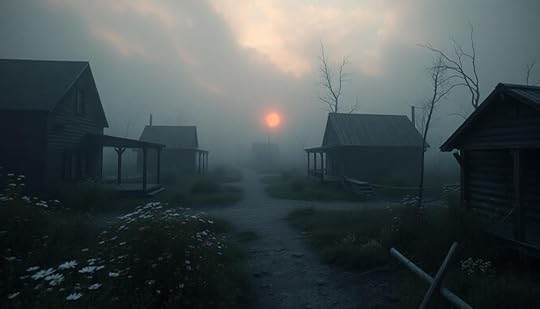
There's something enchanting about abandoned places, especially ghost towns, that draws in adventurers and history enthusiasts alike. You can't help but feel the allure of abandoned places as you wander through decaying structures and overgrown landscapes.
These remnants of once-thriving communities serve as poignant reminders of historical events, like mining booms or agricultural shifts. Each step you take evokes a sense of nostalgia and mystery, prompting you to imagine the lives once lived there.
As you explore, the eerie atmosphere fuels your curiosity, sparking your imagination about the hidden secrets these ghost towns may hold. Urban legends and tales of hauntings often swirl around these locations, adding to their mystique.
You might find yourself captivated by the stories whispered through the wind, compelling you to uncover what lies beneath the surface.
Moreover, the isolation of these towns creates a unique habitat for wildlife, allowing rare species to thrive away from human interference. It's fascinating to think about how nature reclaims what was once bustling with life.
In this blend of history and decay, you can't help but wonder if there's more to these ghost towns than meets the eye.
The Perfect Habitat for Monsters
Ghost towns offer the perfect habitat for monsters, with their abandoned structures providing isolation from human activity.
These eerie environments conceal diverse ecosystems and resources that creatures can exploit for survival.
Additionally, the legends and local myths surrounding these towns create an inviting atmosphere for supernatural entities seeking refuge.
Abandoned Structures and IsolationIn abandoned structures scattered throughout ghost towns, one can find the perfect habitat for monsters. These derelict environments provide the isolation that creatures require to thrive, far from human disturbances and prying eyes. The decay of these sites offers natural camouflage, allowing monsters to remain undetected as they establish their territories.
Many ghost towns sit in remote areas, surrounded by dense forests and mountains, enhancing their inaccessibility. This isolation transforms them into ideal hiding spots for monstrous beings seeking refuge from the outside world. Old mines and underground tunnels in these towns serve as perfect nesting grounds, offering shelter and strategic locations for ambushing unsuspecting visitors.
As you wander through these eerie structures, the remnants of past human activity heighten your sense of dread. Shadows and sounds may hint at the unknown lurking just out of sight.
Each creak of the floorboards could signal a hidden presence, a reminder that isolation isn't just a physical barrier; it's an invitation for monsters to thrive, unseen and untouched, in the forgotten corners of the world.
Concealed Ecosystems and ResourcesMany abandoned towns harbor concealed ecosystems that nurture a variety of monstrous species. These ghost towns often provide the perfect environment for monsters to thrive, thanks to their abandoned buildings and infrastructure that serve as ideal hiding spots and breeding grounds.
The isolation of these towns fosters a unique ecosystem, allowing specialized habitats to develop with minimal human interference. Moreover, many ghost towns are strategically located near critical natural resources, such as water sources and abundant wildlife.
These resources not only sustain monster populations but also supply them with food and shelter. The decaying remnants of civilization act as camouflage, enabling monsters to blend into the environment and evade detection effortlessly.
As you wander through these eerie landscapes, you might sense that you're not alone. The combination of concealed ecosystems and essential resources creates an unparalleled habitat for monsters, allowing them to flourish away from prying eyes.
These towns, once bustling with life, now serve as hidden sanctuaries, preserving the delicate balance of nature while harboring creatures that remain largely unseen. Ghost towns are more than relics; they're thriving environments for the extraordinary.
Legends and Local MythsAbandoned towns often inspire local legends that paint a vivid picture of monstrous inhabitants lurking in the shadows. You may hear tales that let your imagination run wild, envisioning cryptids like Bigfoot or Chupacabra prowling among the decaying structures.
These ghost towns, such as Bodie in California and Centralia in Pennsylvania, serve as the backdrop for eerie stories of hauntings and supernatural occurrences.
The isolation and decay found in these deserted places create the perfect habitat for these mythical creatures. With human activity absent, local myths flourish, suggesting that unseen beings thrive in the ruins.
Dense forests and abandoned mines not only conceal these monsters but also provide them with resources to survive.
As you explore these ghostly landscapes, you might find yourself questioning the local legends. Are they merely stories, or do they hint at something lurking just out of sight?
Tales of Ghost Town Encounters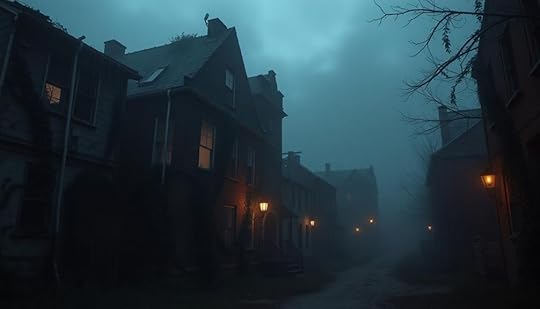
Ghost towns create the perfect stage for chilling encounters with the unknown. Imagine wandering through the dusty streets of a once-bustling mining town, only to feel an unsettling presence lurking just out of sight.
Let's take a look at some eerie scenarios that have haunted explorers over the years:
Locals with Odd Behaviors: You might run into townsfolk who seem off, their strange mannerisms hinting at dark secrets or lingering spirits.Isolation's Grip: In these desolate areas, the absence of life amplifies every creak and rustle, heightening your fear of unseen threats.Poor Decisions in Panic: Picture a group of thrill-seekers, panicking in the face of something that's beyond comprehension, making reckless choices that seal their fate.These tales often highlight the terrifying unpredictability of ghost towns, where the shadows may conceal monsters waiting to pounce.
As you tread carefully through these abandoned spaces, remember that each step could lead you closer to a chilling encounter. It's a reminder that in the silence of decay, something monstrous might be watching.
Signs of Life in the Shadows
In the shadows of these forgotten places, signs of life often emerge in unexpected ways. You might think ghost towns are merely relics of the past, but let them know there's more lurking beneath the surface. The isolation and crumbling structures create an ideal environment for unknown creatures, allowing them to thrive away from human eyes.
A lot of people have reported strange occurrences in these areas—sightings of unusual creatures and eerie sounds that send shivers down your spine. These anomalies hint at hidden dangers, suggesting these abandoned places might serve as sanctuaries for monsters. The lack of human activity means these entities can establish their territories without interruption.
Additionally, archaeological evidence reveals patterns of mysterious disappearances, hinting at past encounters with creatures that still haunt these desolate lands. The combination of local legends and the chilling atmosphere only adds to the mystique of ghost towns.
As you explore, keep your senses sharp; you never know what might be lurking in the shadows, waiting for the right moment to reveal themselves.
Famous Ghost Towns and Their Myths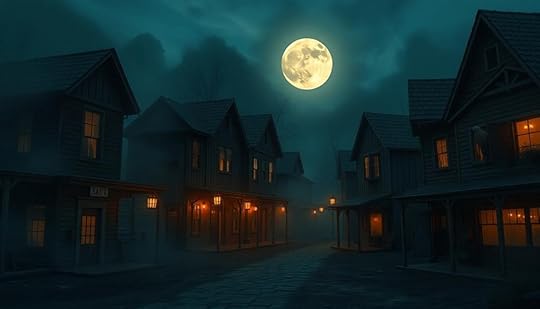
Explore the eerie allure of famous ghost towns, where myths intertwine with the remnants of once-thriving communities. Each deserted street and crumbling building holds stories that spark curiosity and fear. If you go back to these haunting locales, you might just see what's lurking in the shadows.
Bodie, California: Once a gold mining boomtown, now a ghost town preserved in "arrested decay," rumored to be haunted by miners' spirits.Craco, Italy: Abandoned since the 1980s due to landslides, its eerie legends and ghost sightings draw urban explorers seeking supernatural encounters.Centralia, Pennsylvania: Known for an underground coal fire burning since 1962, theories link its desolation to malevolent forces tied to the environment.Rhyolite, Nevada, enchants visitors with tales of cursed treasures and ghostly apparitions, while Kayaköy in Turkey whispers legends of restless spirits guarding its secrets.
These ghost towns, rich in lore, invite you to uncover the mysteries hidden within their decaying walls. What's waiting for you in these forgotten places?
The Psychology of Fear in Isolation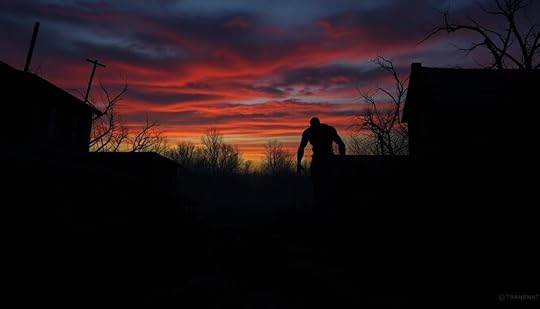
There's something unsettling about being alone in a ghost town, where the silence can feel deafening and the shadows seem to stretch endlessly. You can't let your imagination run wild, yet the eerie stillness invites it. The absence of social support heightens your anxiety, making you hyper-aware of every creak and rustle.
In this desolation, your mind fills in the gaps, conjuring fears of unseen monsters lurking just beyond your sight. Prolonged isolation raises stress hormones, distorting your perception and magnifying sensations of fear. You might find yourself jumping at shadows, each flicker of movement triggering your survival instincts.
The uncanny valley of familiar yet altered surroundings creates a discomfort that's hard to shake off. As you navigate through these abandoned spaces, every corner holds potential threats, and the oppressive atmosphere pushes you toward irrational thoughts and decisions.
You want to make sense of it all, but the more you try, the more the fear consumes you. In ghost towns, the line between reality and imagination blurs, leaving you to confront not just the landscape, but the monsters within your mind.
ConclusionAs you stand amidst the crumbling walls of a ghost town, an unsettling chill creeps down your spine. What if those shadows aren't just tricks of the light? The eerie silence hangs heavy, and you can't shake the feeling that unseen eyes are watching. In this forgotten world, where myths linger and monsters might thrive, you realize that every creak and whisper could be a warning. You take a deep breath, wondering what truly lurks in the dark corners of the past.
What if Dreams Are a Gateway to Monster Realms
If dreams are gateways to monster domains, you're exploring parts of your psyche that influence your waking life. Each monster represents fears or unresolved struggles, manifesting deep emotional truths. Through lucid dreaming, you can confront these beings, gaining insights to empower yourself. Nightmares serve as unique opportunities to face your darkest worries, allowing you to grow. Cultures around the world see these experiences as paths to wisdom and self-understanding. By embracing the chaos, you uncover layers of your identity that might surprise you. There's much more to uncover about these dream domains and their significance, so keep exploring!
Key TakeawaysDreams may serve as portals to alternate universes, potentially leading to realms populated by monsters representing our deepest fears.Confronting dream creatures can yield significant personal insights and promote emotional growth by facing unresolved struggles.Lucid dreaming enables individuals to navigate these monster realms consciously, enhancing agency over their experiences.Nightmares featuring monsters may symbolize internal conflicts, urging dreamers to confront and understand their fears in waking life.Cultural interpretations often view monsters in dreams as opportunities for spiritual growth, encouraging exploration of one's psyche.Alternate Universes in Dreams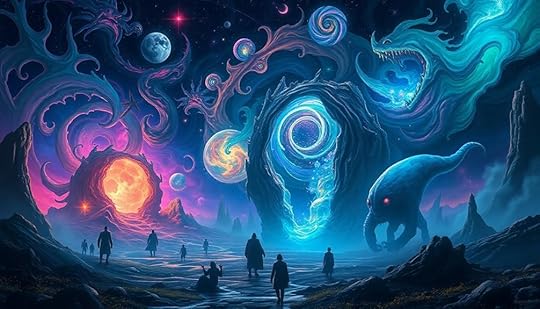
Many people experience dreams that feel like gateways to alternate universes, where every choice leads to a different reality. In these dream environments, you might find yourself wandering through landscapes shaped by your thoughts and emotions, each reflecting a unique set of possibilities.
The multiverse theory suggests that every dream you have could represent a distinct reality, complete with its own rules and inhabitants, just waiting for you to explore. This concept resonates with the idea of cryptid mysteries, as both explore the unknown and challenge our perceptions of what's real.
If you're able to lucid dream, you can consciously navigate these alternate universes. This skill allows you to interact with the creatures and monsters that surface in your dreams, which often symbolize personal fears or unresolved issues.
You might find that confronting these beings can lead to profound insights about yourself. The sensory experiences within these dreams can feel incredibly vivid, blurring the lines between reality and imagination.
Every encounter becomes a chance to explore your psyche, akin to wandering through a new city filled with strange yet familiar sights. Embracing the potential of these dream environments can transform your understanding of yourself and the choices you face in waking life.
Exploring Nightmares and Fears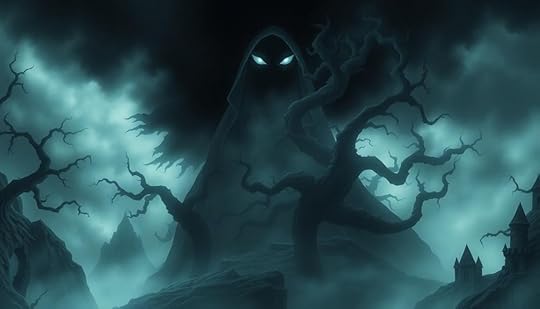
Nightmares often emerge from the depths of your psyche, manifesting as vivid representations of your deepest fears and unresolved emotional struggles. These disturbing dreams often feature dark entities, a sense of entrapment, or overwhelming terror, leaving you emotionally drained upon waking.
You might find yourself haunted by feelings of helplessness, as sleep paralysis can amplify the dread, making you feel as if ominous presences are looming over you. Such experiences can echo themes found in supernatural lore, where monsters embody the fears of various cultures.
Understanding the root of your nightmares can be a vital step in confronting your fears. Each terrifying scenario plays out like a cinematic expression of your inner turmoil, begging for acknowledgment and resolution.
While some cultures view nightmares as a chance for personal growth or spiritual challenges, others may stigmatize the experience, leading you to feel isolated in your fears.
Although confronting these nightmares can seem intimidating, recognizing them as part of your emotional landscape can empower you. By exploring recurring themes, you can better understand your fears, paving the way for healing and transformation.
Ultimately, facing the monsters in your dreams can help you reclaim your narrative and diminish their power over your waking life.
Lucid Dreaming Techniques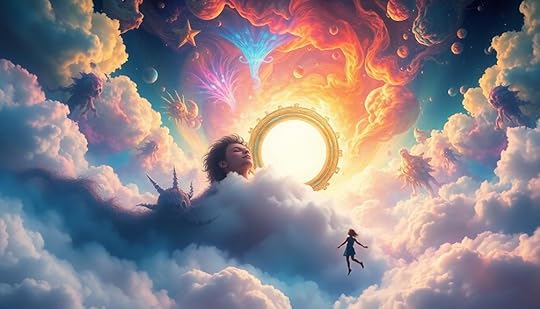
Releasing the potential of your dreams can be a transformative experience, and lucid dreaming techniques offer a pathway to that awareness.
To start, incorporate reality checks into your daily routine. Regularly look at your hands or read text; this habit can help you recognize when you're in a dream state. Keeping a dream journal is another effective technique. By recording your dreams immediately upon waking, you enhance recall and spot recurring themes that might trigger lucidity.
Consider using the Mnemonic Induction of Lucid Dreams (MILD) method as well. Before you sleep, repeat a phrase like "I will realize I'm dreaming" to set your intention.
You could also try the Wake-Back-to-Bed technique (WBTB); wake up after 5-6 hours of sleep, stay awake for 20-30 minutes, then return to sleep to increase your chances of entering REM sleep.
Lastly, as you drift off, visualize a scenario where you become aware that you're dreaming. This reinforces your intention for lucidity and can enhance your control over the dream experience.
Cultural Beliefs About Nightmares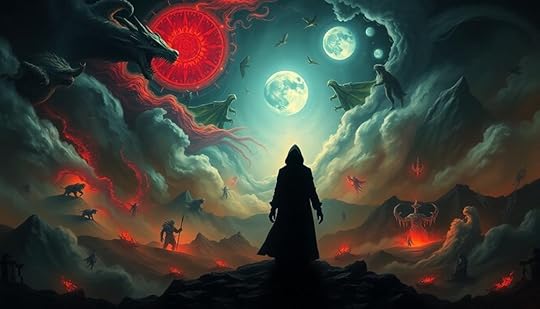
Understanding your dreams can lead to insights about your waking life, but nightmares often carry a different weight. Various cultures interpret nightmares as significant messages, warnings, or opportunities for spiritual growth. Instead of merely viewing them as bad dreams, many believe they reflect unresolved fears or tensions within your life.
Here are some cultural beliefs about nightmares that paint a vivid picture:
Indigenous Cultures: Nightmares can be seen as chances for spiritual growth, where confronting dark entities leads to wisdom.Ancient Egyptians: They believed nightmares were caused by evil spirits, prompting protective amulets and rituals to ward off disturbances.Medieval Europe: Nightmares were often attributed to witches or demonic forces, leading to fears and superstitions around sleep.Old English Origins: The term "nightmare" comes from "mare," a mythological creature thought to sit on your chest, causing distress during sleep.These perspectives emphasize that rather than dismissing nightmares, you might embrace them as pathways to understanding deeper issues, ultimately fostering spiritual growth in your life.
Psychological Insights Into Dreaming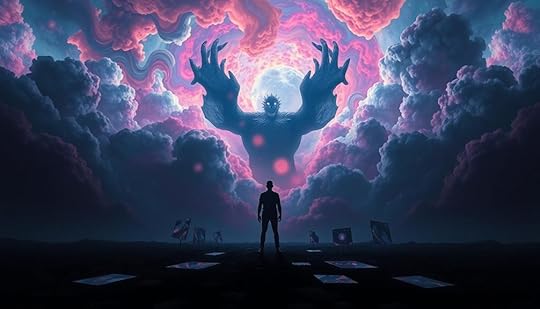
Dreams serve as a fascinating window into your subconscious, often revealing unresolved emotions and hidden desires. They can reflect your daily experiences, transforming fears and anxieties into monstrous figures that challenge you. Still to this day, psychological theories suggest that these nightmares serve a purpose. By confronting these nightmare creatures, you can enhance your emotional regulation and problem-solving abilities.
Type of DreamSignificancePotential BenefitNightmaresReflects deep fearsPromotes emotional growthLucid DreamsEmpowerment over fearsIncreases agency and controlRecurring DreamsUnresolved issuesHighlights areas needing attentionWhen you engage in lucid dreaming techniques, you can confront these fears, transforming them from something to dread into a source of strength. This process not only helps you manage anxiety but also allows for personal growth and understanding. Your dreams, filled with these symbolic monsters, can guide you toward addressing the emotional conflicts that lie beneath the surface.
ConclusionSo, as you drift into sleep, remember: your dreams might just be portals to other dimensions, where nightmares lurk and fears manifest. Embrace the power of lucidity, explore the depths of your subconscious, and uncover the cultural tales that shape your nighttime visions. With each dream, you're not just a passive observer; you're a brave adventurer, a fearless seeker, and a curious explorer of the unknown. Dive deep, and let the monsters teach you their secrets.
What if Specific Plants Naturally Attract or Repel Monsters
Specific plants can genuinely attract or repel monsters in your garden. For instance, the mysterious mandrake repels witches, while bloodroot wards off evil spirits with its striking red sap. On the flip side, nightshade attracts malevolent entities, so you might want to avoid it if you're aiming for safety. Fragrant herbs like lavender and rosemary emit scents that deter many creatures, while daffodils protect against larger intruders with their toxicity. By strategically selecting plants, you can create a harmonious balance in your garden, enhancing both beauty and protection. Stick around to uncover even more fascinating plant secrets!
Key TakeawaysCertain plants like mandrake and wolfsbane are believed to repel monsters through their toxic properties and mythical associations.Fragrant herbs such as lavender and rosemary can deter unwanted creatures with their strong aromas.Colorful blooms attract beneficial insects while confusing pests, enhancing the garden's defense against monsters.Seasonal planting of diverse flowers ensures a continuous food source for helpful creatures, promoting a balanced ecosystem.Specific plants like bloodroot and yarrow are traditionally used in rituals to ward off evil spirits and monsters.Mythical Plant Characteristics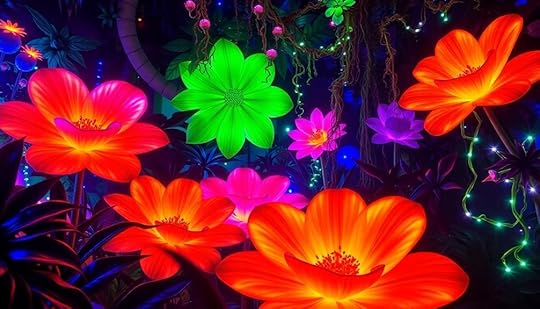
When you explore the world of mythical plants, you'll discover that their characteristics often blur the lines between reality and folklore.
These plants are believed to possess unique abilities that either attract or repel various creatures. For instance, the Mandrake is infamous for its scream when uprooted, said to repel witches and demons while protecting your garden.
Similarly, Bloodroot, with its striking red sap, has a reputation for warding off evil spirits, thanks to its historical ties to indigenous rituals.
In contrast, Nightshade lures in malevolent spirits, showcasing how some plants attract darkness, making them both dangerous and enchanting.
On the brighter side, the Four-leaf Clover is a symbol of good luck, believed to attract fairies and benevolent spirits while repelling misfortune.
Finally, Wolfsbane, tied to werewolf lore, serves as a potent barrier against lycanthropes due to its toxicity.
These mythical plants illustrate how nature can be intertwined with magic, influencing what creatures choose to visit or avoid your space.
Flowers That Attract Friendly Creatures
Brightly colored blooms can transform your garden into a haven for friendly creatures. By incorporating specific flowers, you can attract beneficial insects that not only enhance your garden's beauty but also aid in pest control. Here are three types of flowers to contemplate:
Cosmos and Sunflowers: These vibrant blooms attract butterflies and bees, promoting pollination and a lively ecosystem.Alyssum and Coriander: Their abundant nectar and pollen resources draw a wide variety of beneficial insects, guaranteeing your plants get the help they need.Fragrant Herbs: Lavender and mint not only repel unwanted pests but also keep insects like ladybirds and hoverflies around to help control pest populations.Creating a diverse planting scheme with a mix of annuals and perennials can greatly increase your chances of attracting these friendly creatures.
Seasonal planting strategies, combining both cool and warm-season flowers, will guarantee a continuous bloom. This approach maintains a consistent food source for beneficial insects throughout the year, ultimately leading to a healthier garden.
Repelling Monsters With Scent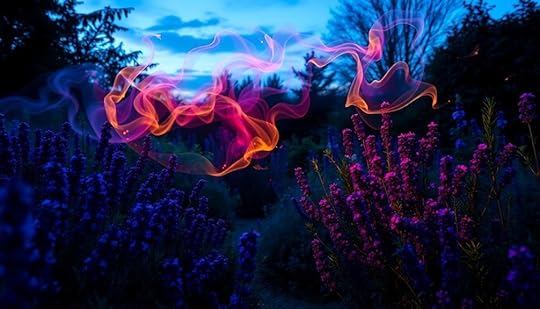
To keep monsters at bay, harness the power of scent in your garden. Fragrant plants like lavender, rosemary, and mint emit strong aromas that monsters find less appealing. By strategically planting these herbs, you create an environment that's less inviting for these creatures.
Additionally, spices such as garlic and black pepper can deter various beings, including monsters, with their potent smells. Consider incorporating plants with unpleasant odors, like marigolds and catmint, to serve as natural barriers. Just as these plants repel garden pests, they can also fend off unwanted monster visitors.
Creating a border of aromatic herbs not only beautifies your space but also establishes a protective zone. Mixing a variety of strongly scented plants enhances your garden's defenses. When the air is thick with powerful scents, it can be enough to send even the bravest monster running.
Colorful Blooms and Their Effects
Colorful blooms can transform your garden into a haven, attracting helpful insects and possibly keeping monsters at bay.
The vibrant colors and strong fragrances work together to create a protective atmosphere, while seasonal blooming patterns guarantee your garden stays lively year-round.
Let's explore how these eye-catching flowers can enhance both beauty and safety in your space.
Vibrant Colors and AttractionWhen you walk through a garden filled with vibrant blooms, you can't help but notice how these colors draw in a variety of beneficial insects.
Colorful flowers, like marigolds and zinnias, do more than just look pretty; they play an essential role in your garden's health. Bright hues signal nectar availability, inviting pollinators like bees and butterflies, which are vital for ecosystem balance.
Additionally, certain plants can enhance the health of your pets, as seen with safe flowers for cats and dogs, which contribute to a thriving environment for all creatures in your garden safe flowers for cats.
Here are three reasons to embrace vibrant colors in your garden:
Insect Attraction: Certain colors, especially blue and purple, are more appealing to beneficial insects, increasing their visitation and support for your plants.Pest Deterrence: The overwhelming visual stimuli of bright blooms can confuse unwanted pests, making it harder for them to locate their preferred plants.Seasonal Diversity: Planting a variety of colorful blooms throughout the growing season guarantees a continuous food supply for beneficial insects, enhancing pest management.Fragrance and Repelling EffectsThe enchanting scents of fragrant plants can create a powerful defense in your garden, warding off unwanted pests and possibly even fictional monsters.
Plants like lavender and mint release strong fragrances that can repel various pests, suggesting they might also deter mythical creatures lurking nearby.
Incorporating colorful blooms like marigolds and petunias not only beautifies your space but also signals a well-maintained garden, which could act as a visual deterrent for any monstrous entities.
Additionally, engaging in playful communication through seniors texting humor can lighten the mood in your garden, making it a more inviting space for everyone.
Certain fragrant herbs, such as rosemary and basil, emit odors that mask other scents. This ability can confuse or repel monsters that rely on their sense of smell for navigation.
Meanwhile, vibrant plants like sunflowers and cosmos can distract or disorient these creatures, drawing attention away from more vulnerable areas of your garden.
Seasonal Blooming PatternsSeasonal blooms can transform your garden into a vibrant sanctuary that attracts beneficial creatures while potentially keeping monsters at bay.
The colors and scents of flowers play an essential role in this dynamic, drawing in allies and deterring threats. Here's how you can harness the power of seasonal blooms:
Spring Blooms: Plant tulips and daffodils. Their bright colors create an inviting environment that attracts helpful insects and birds, while repelling some monsters that dislike their scents.Summer Blooms: Incorporate sunflowers and cosmos. Their strong aromas can deter certain monstrous beings, while their vibrant appearance enhances garden aesthetics and encourages pollinators.Autumn Blooms: Add asters and chrysanthemums. These flowers emit fragrances that can repel unwanted creatures, creating a protective barrier as the season shifts.Creating Harmonious Ecosystems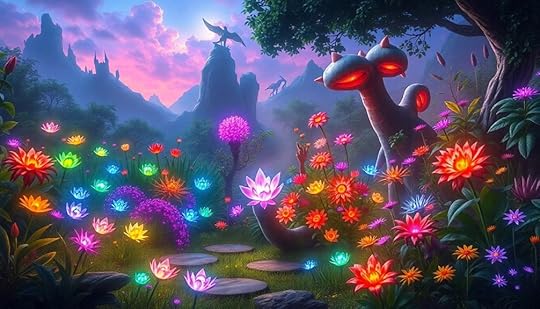
To create a harmonious ecosystem in your garden, you'll want to incorporate beneficial plant companions that attract helpful insects.
These plants not only enhance pest control but also promote a balanced environment by providing food sources for these allies.
Beneficial Plant CompanionsCreating a thriving garden ecosystem means embracing beneficial plant companions that work together to enhance your plants' health. By incorporating certain plants, you can attract beneficial insects that naturally control pests, promoting a balanced environment.
Here are some key strategies to take into account:
Insectary Plants: Plant alyssum, borage, and flat-leaved parsley to invite beneficial insects like ladybugs and lacewings, which help keep pest populations in check.Diverse Plantings: Use a mix of flowering plants to provide nectar and shelter for beneficial insects year-round. This diversity helps create a more resilient ecosystem that can fend off unwanted garden invaders.Seasonal Sowing: Incorporate both cool and warm-season plants to sustain beneficial insect activity throughout the year. This varied habitat guarantees a continuous food source, enhancing the effectiveness of your pest management efforts.Natural Repellents StrategiesWhile you cultivate your garden, consider how certain plants can act as natural repellents, helping to maintain a harmonious ecosystem. Fragrant plants like lavender and rosemary not only smell delightful but also emit scents that deter undesirable creatures. Incorporating toxic plants such as daffodils and fritillaries keeps foraging animals like squirrels at bay, ensuring your plants remain safe.
Additionally, utilizing organic methods to enhance your garden's resilience can greatly reduce reliance on chemical pesticides, promoting sustainability in your gardening practices, similar to the benefits of renewable energy sources for heat pumps.
You can further enhance your garden's resilience by mixing in animal-resistant plants, such as butterfly bushes and mint. These plants not only beautify your space but also increase the chances of survival against pesky critters.
Additionally, consider planting smelly flowers like marigolds and catmint to tackle mosquito populations, allowing you to enjoy your outdoor area without irritation.
Regularly monitoring and maintaining a diverse selection of plants is vital. By fostering a resilient ecosystem, you'll encourage a natural balance between beneficial and harmful creatures.
Embrace these natural repellent strategies, and your garden will thrive in harmony, creating an inviting space for both you and the beneficial creatures you want to attract. With the right plant choices, you can cultivate a garden that flourishes while keeping the unwanted monsters at bay.
Legendary Plants in Folklore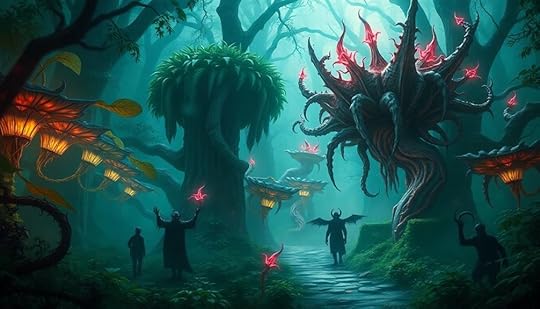
Legendary plants in folklore have long captivated imaginations, weaving tales of magic and mystery. These extraordinary plants often serve as symbols of protection and fear, attracting or repelling supernatural beings.
Here are three legendary plants you should know about:
Mandrake: This enchanting plant is famed for its magical properties. Folklore claims it screams when uprooted, making it a powerful tool that can attract or repel various spirits.Belladonna (Deadly Nightshade): Often associated with witches, this toxic plant is believed to ward off malevolent spirits. Its reputation for danger makes it a potent deterrent against dark forces.Yarrow: Recognized across cultures for its protective qualities, Yarrow is said to repel evil spirits and monsters. Carrying it as a charm or placing it around your home enhances your defenses against malevolent creatures.These legendary plants not only enrich folklore but also remind us of the enduring connection between nature and our fears of the unknown.
Whether you're intrigued or intimidated, their stories continue to inspire curiosity about the unseen world around us.
Practical Applications in Gardening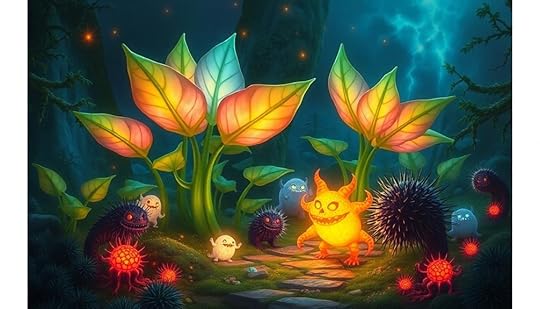
Plants hold incredible potential beyond their mythological roots, especially when it comes to practical gardening. By selecting specific flora, you can naturally repel unwanted monsters and protect your crops.
For instance, incorporating lavender and thyme not only adds beauty to your garden but also produces strong fragrances that deter deer and rabbits.
If you're looking to keep larger threats at bay, consider adding poisonous plants like daffodils. Many animals instinctively avoid these due to their toxicity, making them an effective barrier against larger intruders.
Scented herbs such as mint and garlic are also great choices for repelling nibbling pests like squirrels.
Additionally, planting marigolds and catmint creates an unwelcoming environment for mosquitoes, which can ruin your outdoor experience.
A diverse planting strategy that includes these natural pest-repelling plants not only protects your garden but also fosters a balanced ecosystem. This approach enhances the overall health of your garden, making it more resilient against any potential monster presence.
Balancing Nature and Fantasy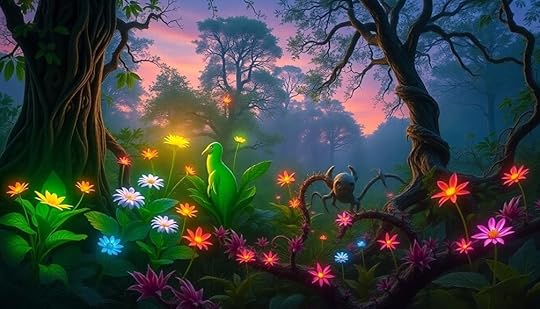
In the domain of fantasy, blending nature with imaginative elements creates a rich tapestry where flora plays an essential role in shaping interactions with monsters.
You can envision a world where specific plants possess unique characteristics that either attract or repel these creatures. Just as real-world plants deter pests, your fantasy landscape can utilize enchanting botanical traits to influence creature dynamics.
Consider these examples:
Fragrant Herbs: Plants like lavender could repel ethereal beings, thanks to their calming properties, creating safe havens for adventurers.Sharp Thorned Plants: Using natural barriers, these flora can ward off aggressive monsters, protecting villages or sacred sites.Enchanted Blooms: Imagine flowers that bloom under a full moon, luring fae or hypnotizing nearby beasts, adding layers of intrigue to your story.Community Insights and Experiences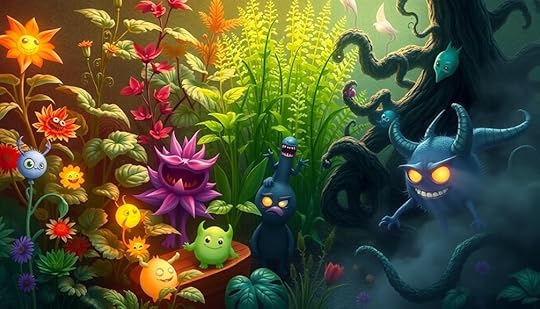
Many gardeners have discovered the fascinating intersection of botany and fantasy, sharing their experiences of using specific plants to create a protective sanctuary against both garden pests and mythical monsters.
You might find that incorporating fragrant plants like lavender and thyme not only keeps those pesky insects at bay but could also deter any lurking creatures with their strong scents.
Community members have also noted the success of planting daffodils and hellebores, known for their poisonous properties, to ward off unwanted critters and potential monsters alike.
If you're looking to attract friendly creatures, consider varieties like flat-leaved parsley and coriander, which may draw in beneficial insects and possibly friendly monsters seeking a harmonious garden.
Engaging in diverse plantings creates an ecosystem that balances the presence of both pests and enigmatic beings.
Finally, don't overlook the power of DIY pepper sprays made from garlic and mint, which can serve as barriers against garden threats, whether they be natural or supernatural.
ConclusionIncorporating plants that attract or repel monsters can truly enhance your garden's magic. Did you know that over 70% of gardeners believe certain flowers can influence the presence of wildlife? By choosing the right blooms, you can create a vibrant, harmonious ecosystem that welcomes friendly creatures while keeping the menacing ones at bay. So, embrace these mythical plants, and watch your garden transform into a sanctuary of wonder and enchantment!
What if Monster DNA Samples Are Already Being Analyzed in Labs
If monster DNA samples are already being analyzed in labs, you're witnessing a thrilling intersection of science and legend. Researchers, like those from the University of Otago, have collected extensive samples from locations like Loch Ness. Their studies reveal a significant eel population, which could explain many sightings attributed to mysterious creatures. While such findings enhance our understanding of biodiversity, they also fuel ongoing curiosity about the unknown. This transformative research opens the door for more discoveries about what lies beneath the surface, drawing you into the enchanting world of ecological mysteries. There's so much more to uncover!
Key TakeawaysCurrent DNA research, like the Loch Ness study, analyzes environmental samples to explore the existence of legendary creatures.If monster DNA samples are being analyzed, findings could reveal insights into species linked to folklore.Advanced eDNA techniques enable researchers to identify genetic markers of elusive or mythical creatures.Ongoing studies may debunk or support claims of monsters by confirming or dismissing DNA samples from various habitats.Public interest in mythical creatures can drive funding and research efforts, enhancing biodiversity knowledge and conservation initiatives.Current Status of DNA Research
DNA research is making waves in the scientific community, especially with recent studies like those conducted at Loch Ness. Led by Neil Gemmell from the University of Otago, an international team collected water samples to analyze the DNA present in this iconic loch. They examined over 500 million environmental DNA sequences, uncovering a wealth of genetic information from various species in the loch.
Among the notable findings was a significant amount of eel DNA detected at multiple sampling locations. This discovery raises intriguing questions about the size of eels in Loch Ness and their potential connection to the many sightings of Nessie, the elusive Loch Ness Monster.
The results of this groundbreaking DNA analysis, set to be published in January 2019, promise to enhance our understanding of the biological diversity present in Loch Ness.
This research not only sheds light on the life forms inhabiting the loch but also sets the stage for future ecological studies and conservation efforts. As scientists explore deeper into the DNA landscape of Loch Ness, you can expect continued excitement and exploration surrounding this legendary body of water.
The Eel Theory Explained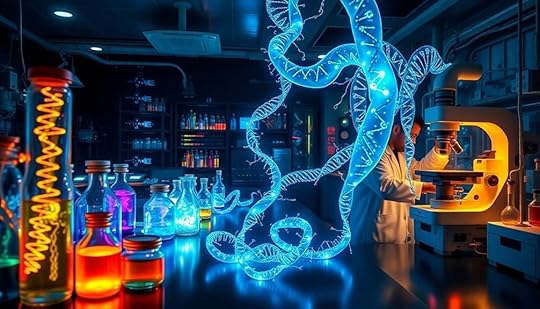
Recent findings from Loch Ness have sparked renewed interest in the theory that giant eels might explain the elusive sightings of the Loch Ness Monster. Recent DNA analysis revealed significant amounts of eel DNA, indicating a robust eel population in the area. This raises intriguing questions about the potential size of these eels. Some speculate that giant eels could easily be mistaken for the legendary creature.
Environmental DNA studies collected samples from various locations and depths in Loch Ness, focusing on identifying genetic markers of aquatic species. Skeptics often highlight the absence of DNA from large marine animals like sturgeons or plesiosaurs, which lends further credence to the eel hypothesis.
As you explore the shores near Urquhart Castle, you can't help but wonder if these giant eels, lurking in the depths, are the source of many sightings.
The ongoing research into Loch Ness's biodiversity, particularly its eel population, continues to provide insights into what might contribute to the legendary sightings.
Impacts on Biodiversity Studies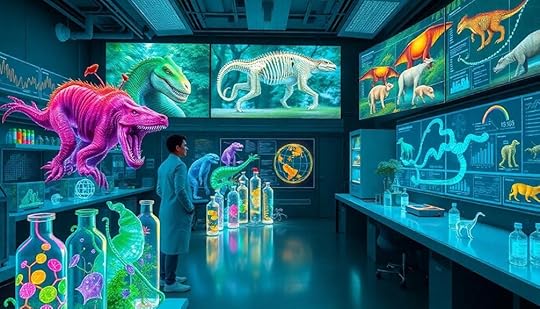
Analyzing environmental DNA from Loch Ness has significant implications for biodiversity studies in the region. Recent findings revealed substantial amounts of eel DNA, suggesting a robust population that might explain some Loch Ness Monster sightings. This genetic analysis highlights the effectiveness of eDNA sampling, allowing researchers to rapidly assess biological diversity, even in remote locations.
Moreover, the discovery of high levels of DNA from land-based species indicates a rich biodiversity that warrants further ecological research. As you explore these results, consider how they can inform conservation strategies. Identifying both native and invasive species in Loch Ness is essential for effective ecosystem management.
The ongoing research into the loch's biodiversity may also lead to the identification of previously undocumented species, enhancing your understanding of the ecological dynamics at play.
As you investigate deeper into these studies, you'll see how eDNA can impact conservation efforts and biodiversity preservation. By examining the genetic makeup of Loch Ness, you not only contribute to the scientific community but also help protect the unique ecosystem that has fascinated people for generations.
Cultural Significance of Nessie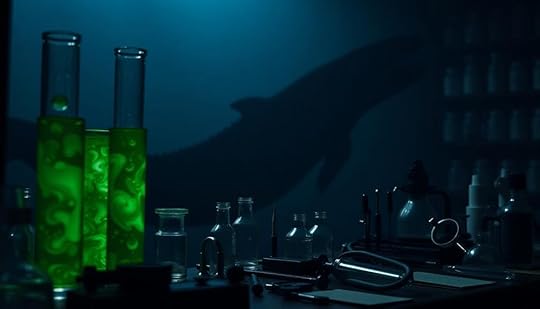
The fascinating studies on Loch Ness's biodiversity not only reveal the ecological richness of the area but also highlight the cultural significance of Nessie, the legendary creature at its heart. The legend of Nessie dates back to 565 AD, featuring an encounter with Saint Columba that established a historical context for this enduring myth.
Nessie has captured imaginations worldwide, becoming a global icon that draws over 400,000 visitors to the Scottish Highlands each year. The Surgeons Photograph of 1934, while later debunked as a hoax, fueled modern fascination and solidified Nessie's presence in popular culture.
Ongoing research, including DNA analysis, promises to keep the mystery alive, enhancing public interest rather than diminishing it. Here's a quick look at Nessie's cultural significance:
AspectDescriptionImpact on CultureHistorical ContextEncounter with Saint ColumbaFoundation for the legendPopular CultureFilms, literature, and merchandiseGlobal icon and tourism driverOngoing ResearchDNA analysis and biodiversity studiesRenewed interest in the mysteryMythsCeltic and local folkloreReflection of societal fascinationMysteryUnsolved questions about existenceContinues to inspire explorationNessie remains a enchanting symbol of the unknown.
Future of Loch Ness Exploration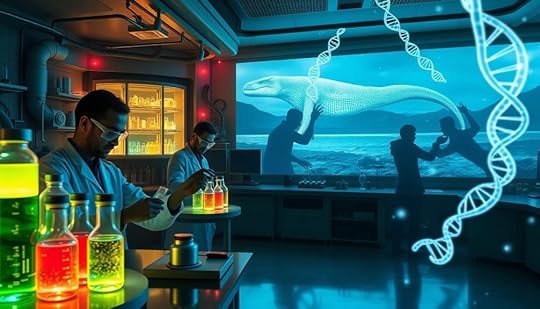
As interest in Loch Ness continues to grow, the future of its exploration looks promising, driven by cutting-edge DNA analysis and collaborative research efforts.
Recent studies from the University of Otago have gathered over 300 water samples, providing a robust dataset that could redefine our understanding of the loch's biodiversity. These findings could lead to identifying not only known species, like eels, but also uncovering new or invasive species that inhabit this mysterious ecosystem.
The excitement surrounding the Loch Ness Monster fuels ongoing investigations, ensuring that this legendary site remains a focal point for scientific inquiry.
Innovative environmental DNA surveys may emerge, influencing research in other inaccessible ecosystems.Collaborative efforts with groups like Loch Ness Hunters aim to sustain public interest and scientific exploration.Enhanced understanding of the unique biodiversity in Loch Ness can inform conservation efforts.ConclusionAs you ponder the possibility of monster DNA samples being analyzed in labs, consider the implications of the Eel Theory. It could reshape our understanding of Loch Ness and the creatures that inhabit it. You can't help but feel the thrill of discovery, as each finding adds layers to biodiversity studies and cultural tales. With ongoing exploration, who knows what truths might surface? The mystery of Nessie isn't just folklore; it could be a key to revealing nature's secrets.
What if Government Research Projects Secretly Study Cryptids
If government research projects secretly study cryptids, it could reveal intriguing connections between folklore, ecology, and societal fears. These investigations might use advanced techniques like genetic sampling and GPS tracking to monitor the impact of cryptids on local biodiversity. By analyzing legends, governments could better understand community concerns and foster tourism linked to these creatures. This concealed research might help shape environmental policies while addressing public safety. You'd discover how these mythical beings intertwine with real ecological issues and societal sentiments, offering a fascinating glimpse into what lies beneath the surface of our collective imagination.
Key TakeawaysGovernment research on cryptids may analyze folklore to gauge public sentiment and societal fears, influencing policy and community safety measures.Secret studies could utilize advanced tracking techniques and genetic sampling to investigate potential undiscovered species and their ecological roles.Governments might monitor cryptid sightings to assess local biodiversity and mitigate risks associated with wildlife interactions.Research efforts could involve collaboration with local communities, integrating traditional ecological knowledge to enhance conservation strategies and tourism.The investigation of cryptids may reflect deeper societal anxieties, linking political history and community identity to these legendary creatures.The Nature of Cryptids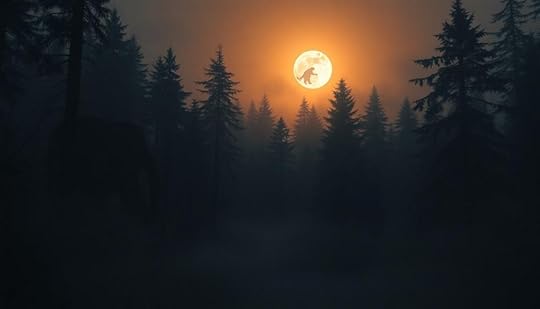
Cryptids are fascinating creatures that capture our imagination, even though their existence hasn't been scientifically proven. These elusive beings, like the Jersey Devil and the Honey Island Swamp Monster, often stem from folklore and urban legends, reflecting cultural beliefs and fears.
You might find it interesting that many cryptids, such as Sewer Alligators, originate from urban myths related to the abandonment of exotic pets.
What's more, cryptids often serve as cautionary tales, warning us about the dangers lurking in the unexplored corners of nature. For instance, the Hombre Caiman symbolizes the consequences of voyeurism, blending human and animal traits to convey complex messages.
In exploring cryptid lore, you can see themes of duality emerge. Creatures like Saucy and Encanto Otto possess both mischievous and benevolent qualities, showcasing the intricate relationships between humans and animals.
This duality can sometimes mirror the complexities of mental illness, illustrating how fear and fascination coexist in our understanding of the unknown. By grappling with these narratives, you engage with deeper societal themes, revealing how cryptids reflect our collective psyche.
Government Interest in Folklore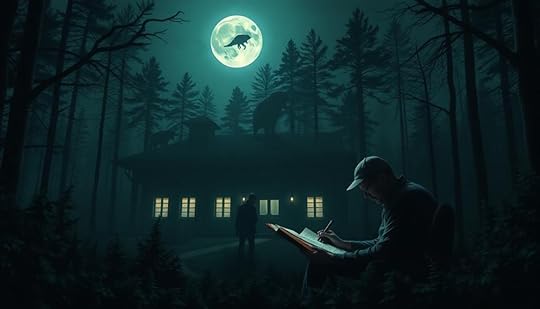
Folklore has always intrigued governments, as it offers insights into cultural beliefs and societal fears. By examining local legends, entities like the CIA have gauged public sentiment and potential threats, demonstrating a keen government interest in folklore. Even though these narratives might seem trivial, they hold significant implications for community identity and social cohesion.
LegendGovernment InterestImpact on SocietyJersey DevilExplored for its influence on regional identityBoosts local tourism and prideHoney Island Swamp MonsterAnalyzed for environmental concerns and tourismReflects local myths tied to natureSewer AlligatorsInvestigated to address urban myths and community safetyShapes public trust in local authoritiesThrough folklore studies, government agencies investigate psychological phenomena linked to reports of cryptids, using these insights to address broader social issues. The U.S. military's research into unexplained phenomena under the guise of national security reveals how legends can impact public perception and morale. Consequently, folklore serves not just as entertainment, but as a valuable tool for understanding societal dynamics.
Potential Research Methodologies
While studying the elusive nature of cryptids, researchers can employ a variety of innovative methodologies to gather reliable data. Field surveys and remote sensing technology are essential for documenting reported sightings and understanding their habitats.
By utilizing advanced tracking and surveillance techniques like GPS collars or motion-sensitive cameras, you can monitor cryptid movements and behaviors, revealing patterns and interactions with their environments over time.
Moreover, genetic sampling methods, such as environmental DNA (eDNA) analysis, could help detect cryptids by isolating DNA from soil or water samples, providing evidence of their existence without needing direct observation.
You can further enhance the research methodologies through collaborative efforts with local communities and indigenous knowledge holders, integrating traditional ecological knowledge and firsthand accounts. This approach enriches the data collected on cryptid behaviors and habitats considerably.
Cultural Significance of Cryptids
Research methodologies can reveal much about the role of cryptids in shaping cultural narratives.
You'll find that creatures like the Jersey Devil and the Honey Island Swamp Monster are central to local folklore, serving as symbols of cultural identity and enhancing tourism in their regions. For instance, the Jersey Devil has become emblematic of New Jersey's unique heritage, embodying local pride.
Urban legends like the Sewer Alligators myth reflect societal attitudes toward wildlife in urban environments, influencing popular culture, as seen in shows like Teenage Mutant Ninja Turtles.
Similarly, the representation of cryptids like El Cuero carries moral lessons, warning communities about hidden dangers, which embeds these narratives into local consciousness.
Legends such as the Demon Cat enrich Washington D.C.'s cultural narrative, blending political history with supernatural elements that resonate with both locals and visitors.
The Honey Island Swamp Monster, once thought to be linked to escaped circus animals, now enhances Louisiana's cultural landscape, fostering community pride and driving tourism.
Psychological Impact on Society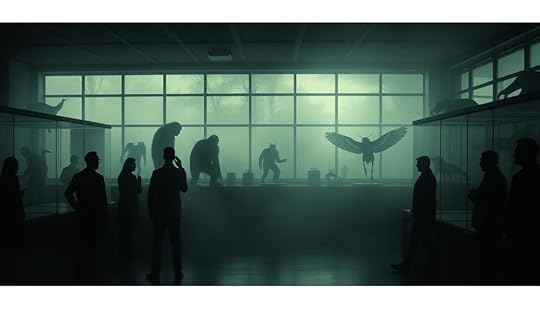
The belief in cryptids can stir deep-seated fears and anxieties within communities, as people often perceive these mysterious creatures as threats to their safety. This psychological impact manifests in various ways, shaping attitudes and interactions.
AspectImpactExampleFear and AnxietyHeightened sense of dangerAvoiding certain areas at nightCommunity BondingStrengthened social connectionsGroup discussions about sightingsMistrust of AuthoritiesSkepticism and paranoiaConspiracy theories about researchMoreover, the portrayal of cryptids in media can amplify these feelings, leading to increased stress and curiosity about potential dangers. When government secrecy surrounds cryptid research, it fuels mistrust, causing individuals to grapple with uncertainty. Urban legends, like sewer alligators, tap into primal fears of the unknown, fostering phobias that affect daily life and community dynamics. Ultimately, the psychological impact of cryptid beliefs can create a cycle of fear that influences how you and your community engage with the world around you.
Biodiversity and Ecological Roles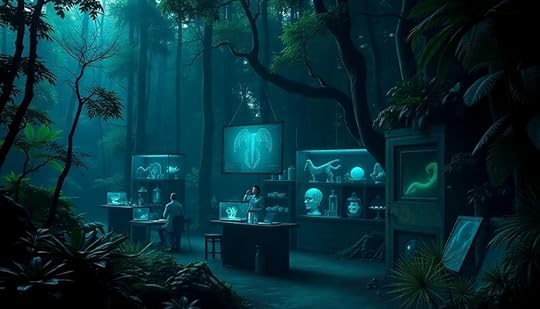
When you explore the ecological roles of cryptids, you'll find that they could greatly impact biodiversity and habitat stability.
Understanding their potential contributions can guide your efforts in ecological impact assessments and habitat preservation.
Ecological Impact AssessmentExploring the ecological impact of cryptids offers a unique lens through which you can assess biodiversity and understand ecological roles within various habitats. Cryptids like the Honey Island Swamp Monster and the Jersey Devil may serve as indicators of local biodiversity, reflecting the health of ecosystems they inhabit and hinting at the presence of unstudied species.
Through an ecological impact assessment, you can observe how creatures like Two-Toed Tom influence predator-prey dynamics, providing insights into population control and environmental balance.
Moreover, the folklore surrounding these cryptids can reveal the effects of human activity on wildlife. Urban legends, such as those about Sewer Alligators, highlight how pet abandonment and pollution disrupt urban ecosystems. By studying these narratives, you can better understand the cultural perceptions of wildlife and their roles in maintaining ecological integrity.
Additionally, understanding the behaviors and habitats of mythical creatures like Pierre Iwara can uncover the ecological needs of rare or endangered species often misunderstood. This knowledge can guide conservation efforts and enhance our appreciation for the complex web of life, reminding us that even the most elusive beings can play significant roles in the ecosystems we share.
Cryptid Habitat PreservationUnderstanding the ecological impact of cryptids naturally leads to the importance of preserving their habitats. These habitats often overlap with ecologically sensitive areas, making their preservation essential for maintaining biodiversity. By focusing on cryptid habitat preservation, you're also protecting the unique flora and fauna that thrive in these regions.
Here are some reasons why this matters:
Cryptids can serve as indicators of environmental health.Protecting their habitats may conserve endangered species.Studying cryptid behaviors can shed light on predator-prey dynamics.Indigenous perspectives enrich habitat preservation efforts.When you look at the potential roles of cryptids, their habitats become even more significant. These ecosystems not only support rumored cryptids but also foster diverse life forms that contribute to ecological balance.
By safeguarding these areas, you're enhancing the resilience of habitats and possibly uncovering unknown species. Additionally, integrating traditional ecological knowledge can create a more holistic approach to conservation.
It's clear that cryptid habitat preservation isn't just about the myths; it's about understanding and protecting the delicate web of life that sustains our planet.
Biodiversity Conservation StrategiesBiodiversity conservation strategies can greatly benefit from recognizing the ecological roles of cryptids within their ecosystems. You might be surprised to learn that these often-mythical creatures can profoundly influence local biodiversity. By studying their interactions with other species, you could uncover unrecognized species contributing to essential ecosystem services like pollination and seed dispersal.
Incorporating cryptids into conservation strategies not only enhances scientific understanding but also promotes public engagement. When communities embrace the folklore surrounding these creatures, they foster respect for local wildlife, which can lead to increased involvement in biodiversity stewardship.
Imagine how much more support you could rally for habitat preservation when people see the value of every species, even those considered cryptids.
Furthermore, understanding the presence or absence of cryptids can provide critical insights into ecosystem health. If their populations shift, it may indicate environmental changes that affect biodiversity as a whole.
Case Studies of Cryptid Sightings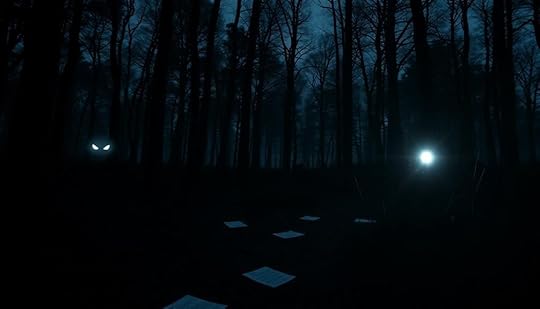
You might find it fascinating to explore some notable cryptid sightings, like the Honey Island Swamp Monster and the Jersey Devil, which have shaped local folklore.
These sightings often prompt government response strategies aimed at addressing public concern and protecting community interests.
The impact on local communities can be profound, as these legends often drive tourism and cultural identity.
Notable Cryptid SightingsAcross the United States, several notable cryptid sightings have captured the imagination of locals and visitors alike.
These intriguing cases often blur the lines between folklore and reality, offering a glimpse into the mysterious side of our world. Here are a few fascinating examples:
Honey Island Swamp Monster: This humanoid creature has been reported in Louisiana since the 1960s, known for its foul odor and frequent sightings during swamp tours.Two-Toed Tom: A notorious 14-foot alligator, spotted in Alabama and Florida, recognized for attacking livestock and having two missing toes.Jersey Devil: With a horse-like appearance and bat-like wings, this creature has been linked to local folklore since the 18th century, with sightings even reported by historical figures.Demon Cat: Spotted in Washington D.C. before major political events, this phantom feline dates back to the 1800s when cats roamed the Capitol.These notable cryptid sightings, while primarily rooted in American culture, resonate with similar stories from around the world.
They continue to inspire curiosity and debate, fueling the quest for answers in the domain of the unexplained.
Government Response StrategiesHow do governments respond to the intriguing phenomenon of cryptid sightings? They often take a multifaceted approach, balancing public safety concerns with community folklore. For example, in New Jersey, local authorities investigate Jersey Devil sightings to document reports and guarantee public safety. Meanwhile, Louisiana's Department of Wildlife and Fisheries collaborates with tourism boards to promote swamp tours after Honey Island Swamp Monster sightings, allowing people to step cautiously into the unknown while enjoying local culture.
Here's a look at various strategies employed:
CryptidGovernment ResponseOutcome/GoalJersey DevilLocal investigations to assess public safetyDocument reports and address community fearsHoney Island Swamp MonsterCollaborate with tourism boardsPromote swamp tours while maintaining cautionSewer AlligatorsPublic awareness campaigns on pet ownershipMitigate risks related to abandoned animalsBigfootMonitor sightings with researchersGather data on wildlife and unusual behaviorsThrough these strategies, governments acknowledge the significance of cryptid sightings while addressing public concerns, guaranteeing people will step into their communities with a sense of safety and curiosity.
Impact on Local CommunitiesMany local communities find their identities intertwined with the cryptids that populate their folklore. These mysterious creatures often bring a unique charm, sparking interest and engagement that can greatly influence local economies and cultures.
This phenomenon is similar to how Bollywood legends have influenced generations through their diverse storytelling and cultural narratives, promoting local pride and identity notable contributions to Indian cinema.
The Honey Island Swamp Monster drives swamp tour businesses in Louisiana.New Jersey's Jersey Devil inspires festivals and merchandise, boosting local commerce.Urban legends like sewer alligators in NYC create a mix of fear and fascination.The Demon Cat in D.C. engages tourists with ghost tours, enriching the local narrative.The impact on local communities can be profound. For instance, Louisiana thrives on the tourism generated by the Honey Island Swamp Monster, making it a key part of their cultural identity.
In New Jersey, the Jersey Devil not only draws crowds but also fosters a sense of pride and unity among residents.
Meanwhile, the urban legend of sewer alligators in NYC shapes community perceptions, intertwining fear with folklore.
Even a hoax like the Lava Bear in Oregon can build community spirit around shared identities.
Through these case studies, it's clear that cryptids can greatly shape local landscapes and bring people together.
Blurring Myths and Realities
Exploring the intersection of myths and realities reveals an intriguing landscape where cryptids thrive, often shaped by societal fears and cultural narratives.
Government research projects focusing on creatures like the Jersey Devil or the Honey Island Swamp Monster could investigate their origins, unraveling how folklore feeds into public belief. Urban legends, such as the Sewer Alligators in NYC, highlight the intertwining of myth and truth, prompting you to reflect on the social and environmental factors that sustain these tales.
Cryptids often embody deeper societal anxieties, much like the Demon Cat in Washington D.C., which reflects political unrest during significant events. Such connections warrant academic inquiry, as they reveal how human behavior and natural phenomena influence the development of these myths.
In studying cryptids like the Hombre Caiman and Encanto Otto, you can gain insights into the psychological significance of folklore, examining how these stories shape collective morals and instincts.
Ultimately, research on cryptids serves as a lens through which you can explore the dual nature of beings in folklore, encouraging discussions about morality, instincts, and the consequences of our actions as depicted in these fascinating legends.
ConclusionSo, next time you spot Bigfoot moonlighting as a government agent, don't panic! It's just another Tuesday in the land of cryptids and conspiracy. Who knows? Maybe the Loch Ness Monster is secretly funding research on unicorns. After all, if you can't find the truth in folklore, why not create your own? As you ponder the mysteries lurking in the shadows, remember: the real monsters might just be the ones with a budget and a research grant.

